An San Shooting With Joy


and South Jeolla International Magazine January 2023 #251
Gwangju


Tel: 062) 222-0011 ▶ Areas of Specialty Contracts, torts, family law, immigration, labor ▶ Civil & Criminal #402 Simsan Bldg, 342-13 Jisan-dong, Dong-gu, Gwangju Next to Gwangju District Court Fax: 062)222-0013 duckheepark@hanmail.net Tel: 062) 222-0011 Attorney Park’s Law Firm Attorney Park’s Law Firm Services available in Korean, English and Chinese Attorney Park Duckhee Former judge, member of GIC board We're ready to serve your best interests in legal disputes. We provide a ordable consultation & representation.
January 2023, Issue 251
Published: January 1, 2023
Cover Photo

An San (Courtesy of Kwangju Women's University)
THE EDITORIAL TEAM
Publisher Dr. Shin Gyonggu
Editor-in-Chief Dr. David E. Shaffer

Managing Editor William Urbanski
Chief Copy Editor Isaiah Winters
Layout Editor Karina Prananto
Photographer Kim Hillel Yunkyoung
Online Editor Karina Prananto
The Gwangju News is the first English monthly magazine for the general public in Korea, first published in 2001. Each monthly issue covers local and regional issues, with a focus on the roles and activities of the international residents and local English-speaking communities.
Copyright ©2023 by the Gwangju International Center. All rights reserved. No part of this publication covered by this copyright may be reproduced in any form or by any means – graphic, electronic, mechanical, photocopying, recording, or otherwise – without the written consent of the publisher.

The Gwangju News is published by the Gwangju International Center: Jungang-ro 196-beon-gil 5 (Geumnam-ro 3-ga), Dong-gu, Gwangju 61475, South Korea

Tel: (+82)-62-226-2733~34 Fax: (+82)-62-226-2731


Website: www.gwangjunewsgic.com Email: gwangjunews@gic.or.kr gwangjunews gwangju_news
Registration No. 광주광역시 라. 00145 (ISSN 2093-5315)
Registration Date: February 22, 2010
Printed by Jieum 지음 (+82)-62-672-2566

For volunteering and article submission inquiries, please contact the editor at gwangjunews@gic.or.kr.
From the Editor
The gates are opening on a new year as the entrance to January welcomes in 2023. We are met with greetings of “Happy New Year!” Additionally, the lunar new year welcomes us on Seollal (Jan. 22) with 새해 복 많이 받으십시오 (“Wishing you much happiness in the new year”). The felicitations are for happiness, but the stark reality is that there are also challenges awaiting us in the Year of the Rabbit.
The climate crisis is rapidly accelerating, bringing us increasingly violent weather conditions – only one of which is the water shortage that is threatening Gwangju. The uncontrolled spread of Covid-19 in China jeopardizes the world with the potential spawn of new and vaccine-resistant variants of the coronavirus. Russia’s unprovoked war on Ukraine is negatively affecting the world economy and creating international shortages of food and fuel, not to mention the havoc being wreaked on the population of Ukraine.
Apologies for all the mention of doom and gloom. The truth is that every year has its challenges, and the more severe those challenges are, the more meaningful the wishes for happiness in the new year become. But challenges are meant to be overcome, and history has shown that time after time mankind has risen to the occasion.
For our part in providing a modicum of happiness and joy, the small but dedicated staff of the Gwangju News pledges to bring you twelve issues of reading material that is interesting and informative, and hopefully, sometimes incentivizing and intoxicating!
As this month’s installment of our pledge, we bring you four features covering the award-winning archer An San, the graphite artist Park So-bin, The North Korea researcher Moe Taylor, and the Gwangju punk band Dirty Rockhon.
We share with you the start of a series of recipes that are delicious, healthy, and environment-friendly. Two articles deal with the looming Gwangju water shortage: One tells how we can save water to make it “rain” [Environment]; the other suggests the root cause of the water shortage problem [Opinion]. To give a musical review of 2022, DJ Danno shares his selection of 22 picks of the year for you [Top of The Drop].
In addition, we have all the regulars: Gwangju city news, a short story, a book review, words of wisdom, a comic strip, a crossword puzzle, and photography. Check out our article on Montessori education as well as Language Teaching and Everyday Korean.
From all of us at the Gwangju News to all of you – We wish you a very happy new year.
Special thanks to Gwangju City and all of our sponsors.
David E. Shaffer Editor-in-Chief Gwangju News
Gwangju News, January 2023 1
gwangjunewsgic.com
& South Jeolla International Magazine
Gwangju
Photo of the Month
By Kim Hillel Yunkyoung
The Photographer
Kim Hillel Yunkyoung is a priest of the Anglican Church here in Gwangju and also a portrait photographer. More of his photographs can be found at Instagram @hillelkim

“Life Goes On”
December 23, 2022, Seogu, Gwangju

Gwangju News, January 2023 gwangjunewsgic.com 2















gwangjunewsgic.com
News, January 2023 3 01. From the Editor 04. Gwangju City News 06. An San : Shooting with Joy 10. People in the Arts: Creating a Goddess Myth in a New Era – Artist Park So-bin 14. Researching North Korea in Gwangju 18. Gwangju Punk Band Dirty Rockhon: Seeking Out Happiness in a Dirty World 22. Lost in Honam: Casualties of the “Crust Belt” 26. Language Teaching: Special Interest Groups for English Teachers 31. Everyday Korean: Episode 61. 우물 안 개구리 / A Frog in a Well 32. Montessori Education I: What Is the Most Important Education Factor for Children? 34. Sports and Activities: Watching the World Cup in Gwangju 36. Environment: How to Be a Rainmaker 38. Recipe: The Choco Carbon Bomb Cake 40. Opinion: Tapped Out 42. Sharing Is Caring 02. Photo of the Month 43. Gwangju Writes: A Can of Coke 46. Book Review: The Lincoln Highway, by Amor Towles 48. Top of The Drop: 22 for ’22 54. Comic Corner: Alan and Me – Episode 19. Family Holiday 1 56. Crossword Puzzle Contents ISSUE 251, January 2023 NEWS FEATURES TRAVEL COMMUNITY TEACHING & LEARNING CULTURE & ARTS
Gwangju
Gwangju
Gwangju City News

Mayor Kang Ki-Jung: “Economic Vitality Through European City Diplomacy”
Mayor Kang met with European Union ambassadors and said, “Let’s build a close relationship with Gwangju, which is called the city of will, art, and beauty, through cooperation between cities.”
Mayor Kang made this remark at City Hall on December 8 during an interview with Maria Castillo Fernandez, the European Union Ambassador to Korea, and the ambassadors to Korea from 19 European Union countries.
Mayor Kang explained what meaning Gwangju has to the Republic of Korea, what charms and strengths it has, and suggested strengthening diplomatic cooperation between Gwangju and Europe.
First, Mayor Kang said, “Gwangju is the political hometown of former President Kim Dae-jung, the first Korean to win the Nobel Peace Prize, and is called a city of ‘will’ with righteous DNA that stands up to injustice.”
In addition, Mayor Kang said, “The Asia Culture Center (ACC) is located in the May 18 Democracy Square (formerly Jeonnam Provincial Office), which was the center of the Gwangju Uprising.” “This is also the reason why Gwangju is called the city of art,” he said.
In particular, Mayor Kang emphasized, “Now, Gwangju is moving beyond a city of democracy and culture to a city of economic vitality.”
Mayor Kang expressed his intention to invite the diplomats to the Gwangju Biennale next year, saying, “I hope to communicate and exchange with various countries of the European Union through city diplomacy.”
Ambassador Fernandez said, “Gwangju is a city full of history that values democracy and human rights, and at a time when eco-friendly digital transformation is very important, Gwangju is preparing for the future. Let’s build a strong relationship.”
The EU is a huge community of 27 member states and maintains a strategic partnership with Korea. Gwangju City’s visit by the European Union ambassadors to Korea is one of the best reasons to build cooperative relationships not only in the cultural industry, but also in artificial intelligence (AI), semiconductors, next-generation batteries, self-driving cars, precision medicine, and MICE industries to foster globalization. This meeting is hoped to be a starting point.
After visiting the Gwangju Museum of Art, the European Union ambassadors to Korea and ambassadors to Korea from 19 European countries visited Gwangju Global Motors and the Ecofriendly Parts Certification Center in the Gwangju Free Economic Zone’s Future Automobile Industry District to examine the current situation there.
Gwangju News, January 2023 gwangjunewsgic.com 4
From the Gwangju Metropolitan City Press Release ( http://gwangju.go.kr )
Mayor Kang Ki-Jung “to Expand Human, Material, and Economic Exchanges with China”

Gwangju Mayor Kang Ki-Jung met Chinese Ambassador to Korea Xing Haiming at City Hall on December 9 to mark the 30th anniversary of diplomatic ties between Korea and China and discuss ways to expand exchanges and cooperation between the two countries.
Ambassador Xing visited Gwangju for the first time that day to attend the General Assembly of 24 Confucian Schools established across the country. Ambassador Xing wrote in the guest book, “I hope that Gwangju, a city of opportunity that will shine tomorrow, will develop even more.”

Mayor Kang said, “The Chinese Consulate General is located in Gwangju, and we are actively exchanging in various fields.”
In particular, he conveyed his willingness to actively attract investment, saying, “In order to implement exchanges between people and of goods, it is necessary to improve transportation conditions, such as air travel, but there are not many international
flights at Muan Airport, so we are making various efforts to solve this problem."
In response, Ambassador Xing said, “Although it has been 30 years since Korea and China established diplomatic ties, we have been neighbors for thousands of years and have a close cultural and economic relationship.”
He continued, “In particular, as Honam is geographically close, I hope that Mayor Kang will play a significant role in the future so that we can actively exchange culturally and economically and achieve a win-win situation.”
gwangjunewsgic.com Gwangju News, January 2023 5
▲ Gwangju City Mayor Kang Ki-Jung (front row, fifth from left) and the delegation of the European Union.
Translated by Lim Se-ryeong.
▲ Gwangju City Mayor Kang Ki-Jung (left) with Chinese Ambassador to Korea Xing Haiming.
An San Shooting with Joy
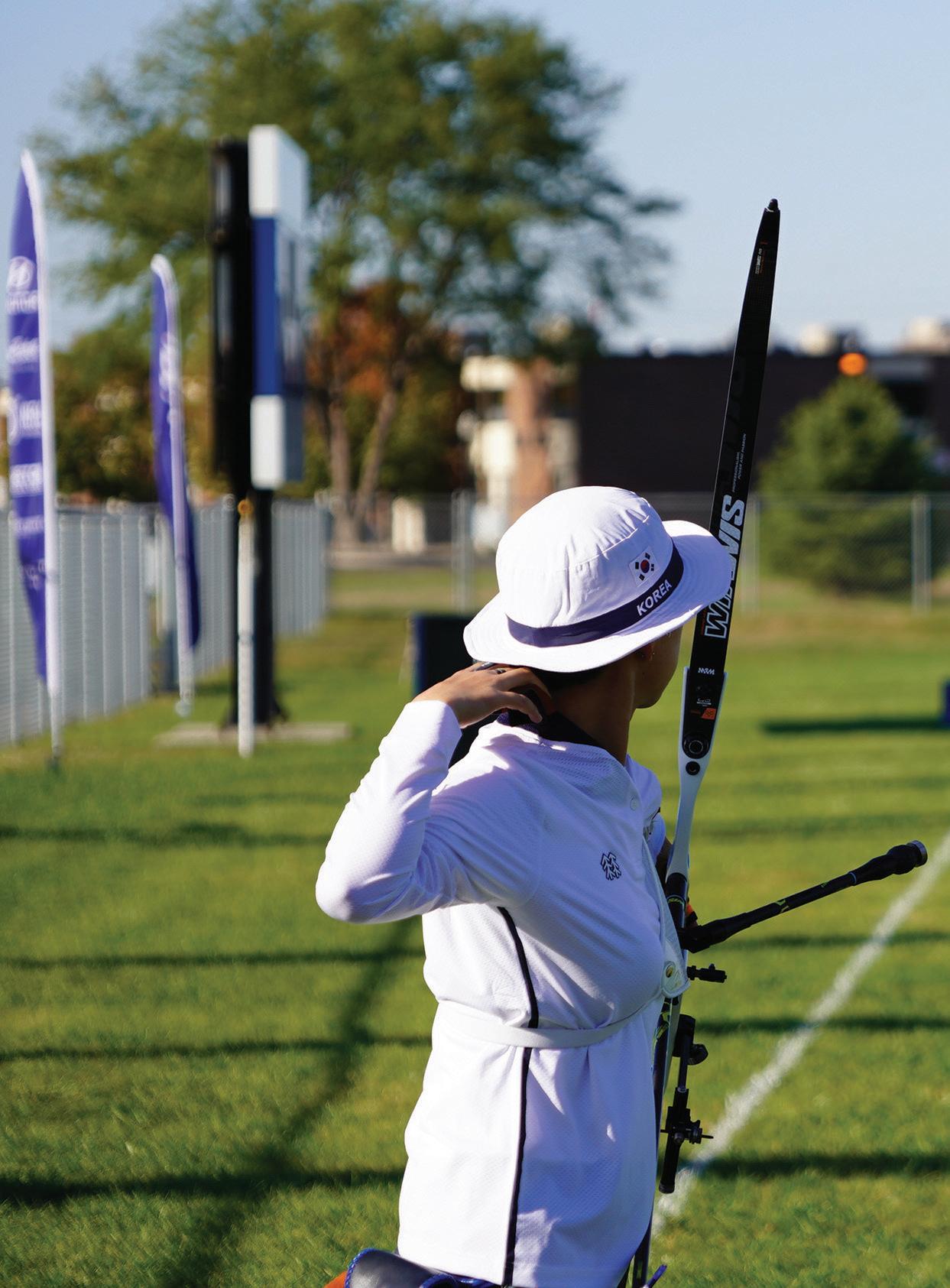 Written by the Gwangju News
Written by the Gwangju News
Gwangju News, January 2023 gwangjunewsgic.com 6
FEATURE
After clinching three gold medals in archery at the 2020 Summer Olympics in Tokyo, Japan, An San went from a relatively unknown local athlete to a national icon and household name, especially here in Gwangju.
Since her commanding victories in Tokyo, An San has continued to be a force to be reckoned with in the archery world. In the past six months, for example, she secured gold medals at the Hyundai Archery World Cup finals in both Columbia and Mexico. In addition to maintaining momentum in her archery career, as well as adapting to her newfound celebrity status, she is currently completing her university studies in the Department of Elementary Special Education at Kwangju Women’s University.
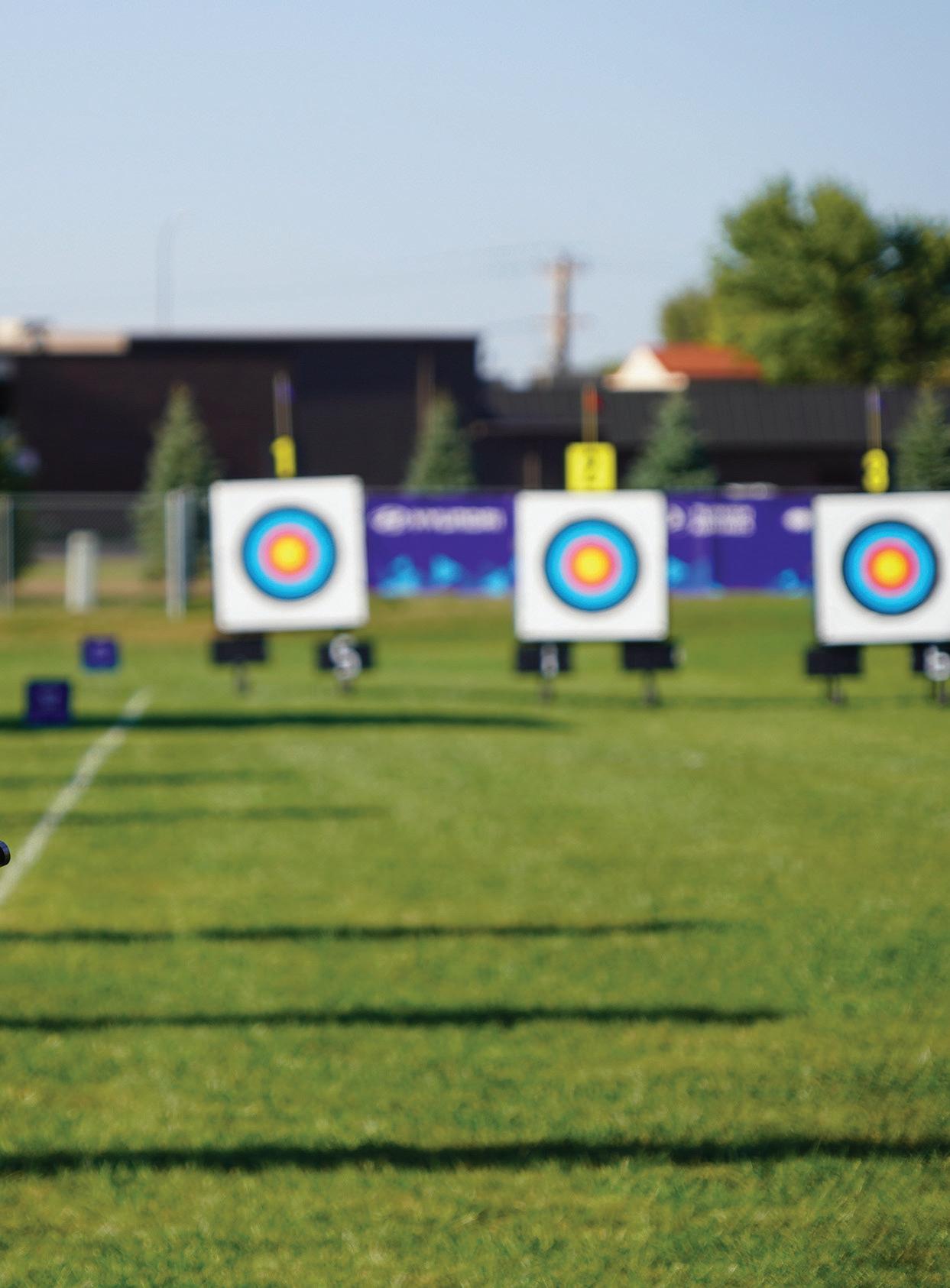
ARCHERY IN GWANGJU
An San first got involved in archery when she was in elementary school in the third grade following the recommendation of a coach, and also because she said the bow just looked amazing. While undeniably possessing a large measure of natural ability, archery was not always easy for her. While speaking to the Gwangju News, she explained that one of the unexpected difficulties she faced was that at such a young age, it was difficult for her to pull the bow string because of her small physique. Rectifying this problem required developing strength through a special diet, which itself was difficult to follow. This is to say nothing of the countless hours of practice she had to hone her abilities.
gwangjunewsgic.com
News, January 2023 7
Gwangju
While developing the skills, discipline, and physicality required to become a champion is no doubt taxing, she offered the following advice to those who would like to follow in her footsteps: “If you always train with joy and do your best, you will get good results. Go for it!”
LOOKING AHEAD
In 2025, Gwangju will host the World Archery Championships. This will be a boon to the city in terms of garnering international attention. It will hopefully also be a vessel for encouraging further participation in the sport.
Leading up to the World Archery Championships, An San hopes that the city can open up more archery centers to encourage participation and allow people to experience the sport. Of course, this will require more manpower and equipment than is currently available.
In addition to her ongoing competitions and studying commitments, she recently joined Gwangju Bank’s archery team with the purpose of further developing regional archery and keeping world-class sports stars in the region.

DAILY LIFE
Since her gold medal performances at the Olympics, it is no surprise that she often gets recognized while walking down the street. She said that people often cheer for her and encourage her. On her days off, she tries to get as much sleep as possible to replenish her energy and tries to relax by listening to music or just reading and, of course, spending time with her friends.
While not everyone can become an Olympic champion, hopefully An San, with the help and support of her dedicated sponsors such as Kwangju Bank, will continue to grow archery in the city and around Jeollanam-do.
Gwangju News, January 2023 gwangjunewsgic.com 8
ARCHERY CENTERS AT KWANGJU WOMEN’S
UNIVERSITY
Kwangju Women’s University (KWU) has been well known throughout the nation to produce many top Olympic archery athletes, so it is no wonder they have many archery training facilities available within the premises, two of which we will introduce below.

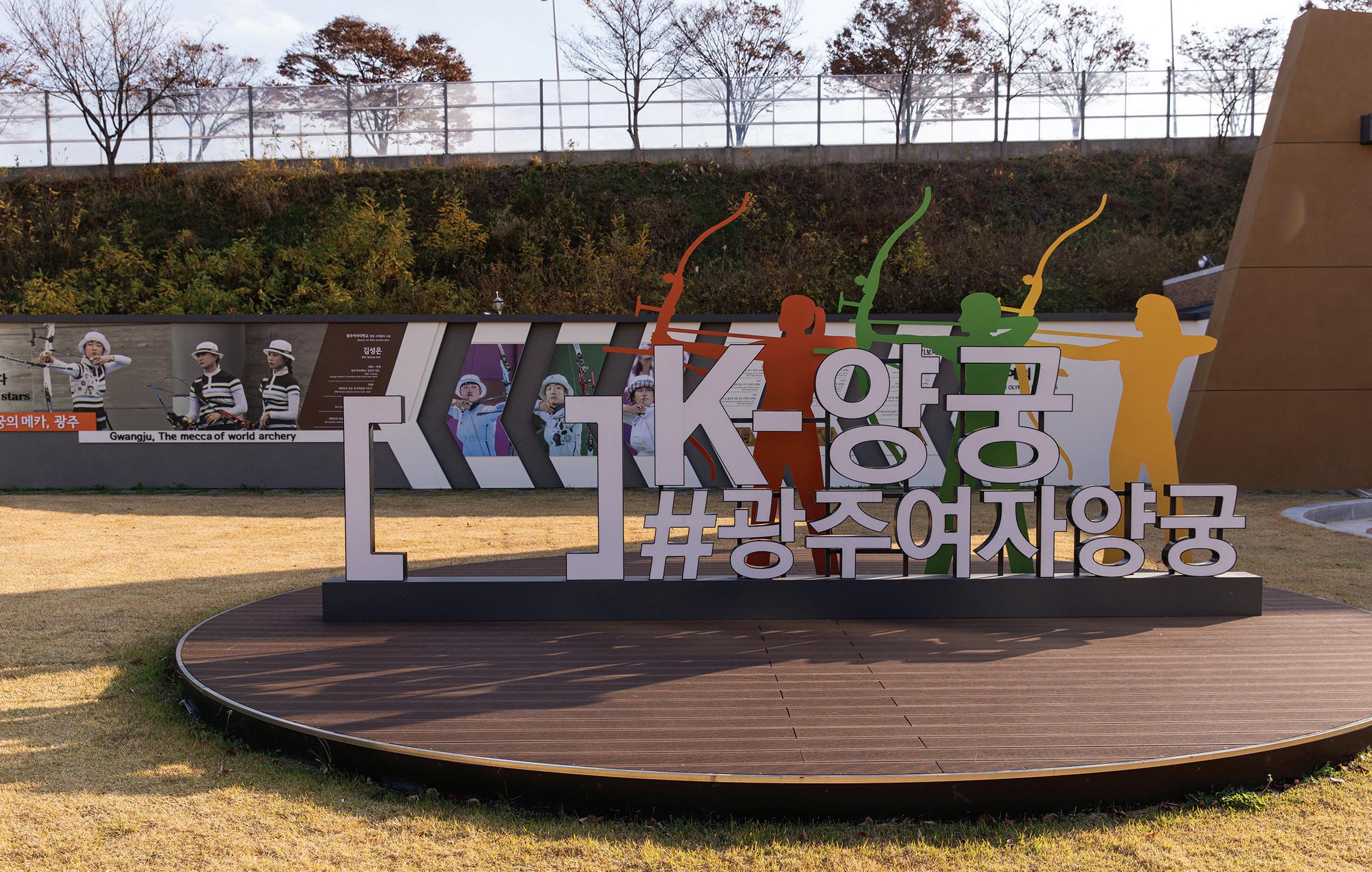
KWU Archery Club (광주여대양궁클럽)
Located in the second-floor basement of the KWU Universiade Gymnasium, this is for members of the general public who are interested in learning or practicing archery. It is operated by Gwangju Daum Sports Club. When we went there to interview the person in charge, there was a group of elementary school students who were there for their regular practice. Bows and arrows are available for borrowing, and the trainer there will help you choose a bow according to your height. The club is open to anyone above third grade in elementary school, and the practice hours are as follows:
Weekdays (Tuesday, Thursday) 10:30–12:00, 17:00–18:30, 19:00–20:30 (80,000-won membership fee/month) Weekends (Saturday) 13:30–15:00, 15:00–16:30 (60,000won membership fee/month) Call them for more information: 062-652-7330
KWU Archery Center
Located on the western side of the university, the center is hard to miss thanks to the archery landmark and the wall of fame featuring famous archers from the university. This center is not open to the public, as it is used mainly for the athletes. The athletes shoot the arrows from inside the building to the target boards outside.
Translation by Karina Prananto Special thanks to Kim Seong-un (KWU Dept. of Sports). Photographs courtesy of Kwangju Women’s University and Kim Hillel Yunkyoung.
gwangjunewsgic.com
News, January 2023 9
Gwangju
▲ Landmark and Wall of Fame of famous archers at KWU Archery Center. Top: Children practicing at the KWU Archery Club.
Creating a Goddess Myth in a New Era Artist Park Sobin
By Kang Jennis Hyunsuk
Afew years ago, I was fascinated by a pair of unique artworks at the Lee Kang-ha Art Museum in Gwangju’s Yangnim-dong. One of the artworks was a drawing of a dragon and a woman drawn only with black pencils. It expressed the legend of Buseok-sa (부석사), a temple in North Gyeongsang Province. As a person who has seen the beauty of the wooden building, which is now a national treasure with its dragon legend, I was curious about the world of Park So-bin’s artworks, and at last, I was given the chance to conduct an interview with her.
Jennis: It’s nice to have the opportunity to interview you for People in the Arts for the Gwangju News. I saw your artworks at the Lee Kang-ha Art Museum in Yangnim-dong. There I could see only two pieces of your works: One was a self-portrait, which showed the strong touch of thick oil paints, and the other was a pencil drawing of a dragon and a woman. They gave me such a strong impression.
Park So-bin: It makes me happy to know that there are people who remember and support my old artworks. Thank you.
Jennis: I’m curious about your childhood, how did you get interested in art?
Park So-bin: As an only child, drawing became a good friend to me. Thankfully, my parents didn’t raise me to conform to societal expectations. They didn’t tell me what I had to do or what I shouldn’t do as a girl. My father encouraged his daughter
who loved drawing. He wanted me to express my thoughts well, so he let me go to a speech academy. Thanks to my parents, who always supported my choices, I was always courageous when I came to a crossroads of choices. I think my father was my first mentor in life.
Jennis: In your self-portraits, I see a human being who has taken off the wrappings of this society’s stereotyped “beautiful woman.” When did you start drawing your portraits? And I wonder, what you are trying to say through the intense gaze of the selfportrait?
Park So-bin: I started painting self-portraits when I graduated from Gwangju Arts High School and attended Mokpo National University’s Department of Fine Arts. While preparing for the entrance examination to an art university in Seoul, Professor Won Dong-seok returned to the university after being reinstated as a dismissed professor. He was called the Father of Korea’s Minjung art in the 1980s and was a champion for democratization. Impressed by his high status, I wanted to look anew at my artwork and myself. So, I had my first solo exhibition with my self-portraits, which I was immersed in during my school days.
Art is said to be spoken in various languages depending on the viewer, but my self-portraits are my view of my art in my 20s, when I was intensely concerned about human instincts and nature. They expressed the power of love to blossom new lives in the midst of the fear of people who could not be free
Gwangju News, January 2023 gwangjunewsgic.com 10 FEATURE
the
People in
Arts
from the pain of those times. The theme of my works was then about the myth of love that provides the energy that humans have been pursuing.
Jennis: Most students of fine arts colleges make their debut with a group graduation exhibition. But as a student, you had a solo exhibition of nude self-portraits. I sense your tremendous energy as an artist. Since when have you worked on The Dragon and the Lady series with pencils? It’s an extraordinary transformation from oil painting to pencil drawings.
Park So-bin: There’s a beauty of moderation in the Oriental aesthetic point of view. As I tried to find the essence of my drawings while studying Oriental philosophy, I thought I didn’t have to use various colors. I think I was able to have a freer imagination by working with a simple material, the pencil. And the graphite, which is used as the core of a pencil, has the history of being underground for thousands and thousands of years. I wanted to use the time of origin of the pencil graphite to express the myth of the dragon that has been handed down for a thousand years in Korea. One day when I went to a temple on a fieldtrip, I saw a drawing of a dragon climbing a pillar. After feeling the powerful strength of life from the dragon pillar, I have deeply studied
the myth of the great Buddhist monk Uisang (의상대사, 625–702), the Chinese lady Seonmyo (선묘), and the dragon.
More than 1,000 years ago, a great monk named Uisang from the Silla Dynasty went to China to study Hwa-eomjong (화엄종), a doctrine of Buddhism. When Uisang returned to Silla after 10 years of study, a Chinese lady named Seonmyo, who admired him, threw herself into the sea, saying that she would become a dragon to protect him. I wanted to express the story of the lady who appeared in the form of a dragon. The long, black, and curved lines of pencils became waves on the sea between the two lands. When the pencil lines overlapped as thick textures, the dragon and the lady became one.
Jennis: A few years ago, I read in several newspapers about your invitational exhibition at the main building of Today Art Museum in Beijing. I even heard that Chinese artists rarely receive invitations to exhibit in the main building of the museum. Would you please tell me about your exhibition at the Today Art Museum?
Park So-bin: It was in 2017 when I was offered an invitational exhibition at the main building of the Today Art Museum; it was the first time for a Korean artist to be invited. During the 49 days of the exhibition period, I filled a 3-meter-high and 17-meter-long wall with pencil drawings. I was immersed in my pencil drawing of the dragon goddess from morning to night. Not to break the mood of the story, I even drew while eating lunch from a packaged lunchbox in front of the painting. That’s why I sometimes met Seonmyo and the dragon in my dreams.
Jennis: If it’s three meters high, you must have drawn at times on a ladder. What made you think of drawing a 17-meter-long piece with thin pencil lines all by yourself? I think it’s a historic event for an

gwangjunewsgic.com Gwangju News, January 2023 11
▲ Park So-bin at work on a wall mural.
artist to draw for 49 days in an individual exhibition. Did the exhibition create any episodes for you?
Park So-bin: There were visitors who bought tickets every day and watched me work in the museum, and several 49-day videos of my work were produced by various media outlets. And it was nice to meet my friends who came from many other countries to celebrate my exhibition. [For one documentary video of the 49-day Beijing exhibition, go to https:// www.youtube.com/watch?v=DpjOB0v4X1c]
Jennis: I wonder how you became such a worldclass artist.
Park So-bin: There were some people who noticed my unique way of expressing Oriental mythology using the 20th-century analog material called a pencil. When I was working as a resident artist at the Gwangju Museum of Art in 2005, Thalia Vrachopoulos, a New York art director who came to the Gwangju Biennale, stopped by my pavilion studio and was surprised to see my works for The Dragon and the Lady. She, as a person who majored in Oriental art history, said that she felt a unique originality from my work, which depicted with a pencil the Oriental myth of the dragon. What’s even more interesting is that before Thalia came to Korea, she saw my small art pieces in a group exhibition at the Elga Gallery in New York, and that interested her in my works. Luckily, I got offered an invitational exhibition from Elga Wimmer and Thalia at that
time. Therefore, I started my overseas activities in earnest with my first individual invitational exhibition in New York in 2007.
Jennis: Do you have any memorable episodes from your overseas exhibitions?
Park So-bin: Many people gave me encouragement and praise at the invitation of the Chelsea Art Museum in New York [in 2009], and I was especially happy when my story was featured in the 100-yearold world art magazine Art in America [in May 2010], which I’d subscribed to when I was in college.
Jennis: How did you get started doing art in China?
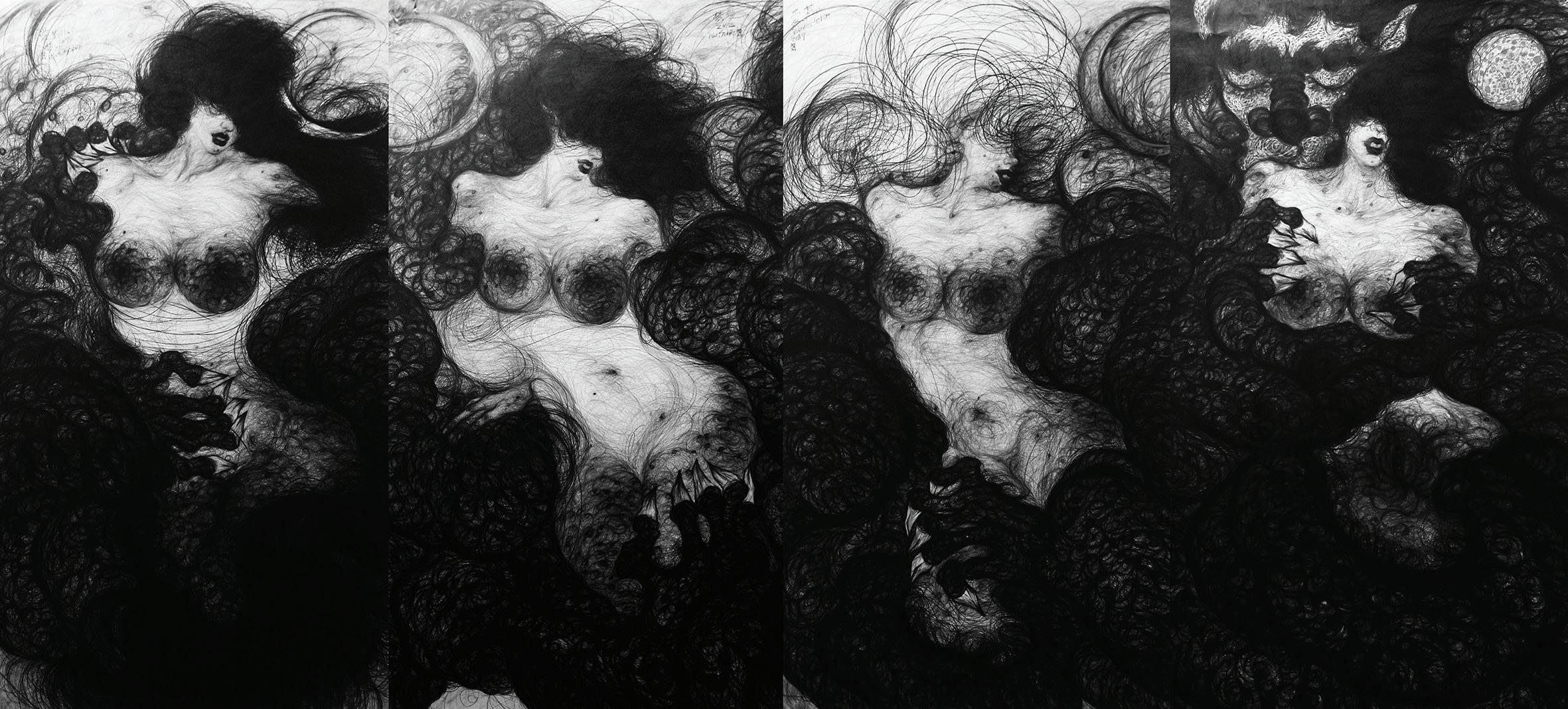
Park So-bin: When I finished my residency at New York in 2009, Gwangju Museum of Arts recruited residency artists for the Beijing Creative Center. The Center, which only started in 2010, has been supporting artists in Gwangju to experience Chinese contemporary art and interact and work with artists from various countries around the world. However, the work of the Beijing Creative Center has been temporarily suspended since 2021 due to the recent Covid-19 pandemic. I went to the Beijing Creative Center in 2011. It has already been over 12 years since my first exhibition in China, followed by many other exhibitions in various countries.
Jennis: What are your plans for the future?
Gwangju News, January 2023 gwangjunewsgic.com 12
▲ The Creation of Female Myth, 2011, pencils on paper, bronze powder.
Park So-bin: Currently, I’m lecturing as an invited professor of fine arts at Hebei University. In addition, I’m preparing for exhibitions I have booked for the next two years. And at my studios in Beijing and Gwangju, I continue working to find the origin of life.
AFTER THE INTERVIEW…
Looking at Park So-bin’s works in The Dragon and the Lady series makes me think of the word bul-i-mun (불이문). Among the several gates in a typical Korean temple, there is one gate named Bul-i-mun Mun means “gate,” and bul-i means “not two.” It always makes me wonder why there couldn’t be two. Similarly, the dragon and the lady aren’t two different beings; I guess Park So-bin herself has also become the dragon – or the lady –in the process of piling up those numerous pencil lines through which the two become one.
All myths are handed down from one generation to the next as memories, transforming themselves according to the needs of the times. I think Park So-bin’s myth also evolves with the times. I hope that her artworks can soon be seen in an exhibition here in her hometown of Gwangju.

The Interviewer
Jennis Kang has been living in Gwangju all her life. She has been doing oil painting for almost a decade, and she has learned that there are a lot of fabulous artists in this city of art. As a freelance interpreter, her desire is to introduce these wonderful artists to the world. Email: speer@naver.com
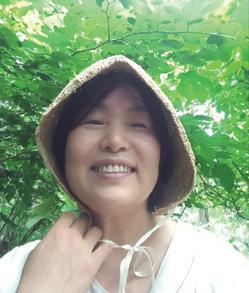
PARK SO-BIN
Born in Gwangju, South Korea, Park earned her BFA at Mokpo National University and her MFA at Chosun University. She has dedicated her life to art ever since her first solo exhibition in 1993. Park has exhibited globally and developed her career as an international artist. She has enjoyed 15 solo and many group exhibitions, including in Gwangju, Seoul, Thessaloniki, and New York. In 2009, she was the recipient of the Young Artist Award from the Gwangju City Art Museum. She became an artist-inresidence in several programs: the Young Artist Residency Program in Gwangju, the Gwangju City Museum Force Gallery residency, a residency in Beijing, and one at the Bushwick Open Studio in Brooklyn (2009), as well as at the Vermont Center for the Arts. For her Chelsea Museum show, she received recognition in the form of reviews in ARTnews and in Art in America, as well as other prestigious publications. Her 2017 Today Art Museum exhibit in Beijing, her 2018 Sanhe Classic Car Museum Artspace Exhibit in Chengdu, her 2019 LaboratoriumVenezia exhibit, and her 2020 Elga Gallery exhibit in New York City resulted in several later museum shows in China and Korea. [See, for example, https://www.tusslemagazine. com/sobin-park]
Gwangju News, January 2023 13
gwangjunewsgic.com
▲ The Creation of a New Female Myth (Buseoksa), 2008, pencils on paper, bronze powder, coloring, 165 in × 59 in.
Researching North Korea in Gwangju
Interview with Dr. Moe Taylor

Not too long ago, I spotted in my inbox an email from a sender I did not recognize, but I did know the friend named in the subject line. It turned out that this person’s PhD supervisory committee member was an old Peace Corps/Korea friend of mine. The email was from Moe Taylor – Dr. Moe (William David) Taylor, to be more precise – and when my old Peace Corps friend found out that Moe was in Gwangju doing post-doctorate research, he suggested that Moe get in touch with me to pick my (cobwebby) brain on what agriculture was like here in the early 1970s. I met with Moe over coffee and was fascinated with his research on North Korea. That led to setting up this interview with Dr. Moe Taylor for the Gwangju News. — D. Shaffer
Gwangju News (GN): Could you tell us a little about your background – about Moe Taylor before he came to Korea and Gwangju?
Moe Taylor: I am a historian, writer, and researcher, and I have called Toronto my home for most of my life. I earned my PhD in history at the University of British Columbia in Vancouver. My dissertation was about North Korea’s relations with Latin America in the 1960s, with a focus on its bilateral relations with socialist Cuba and its support for revolutionary movements in other countries. I have recently turned this dissertation into a book, and that will be published by Cambridge University Press in July 2023.
GN: As your main research interest is North Korea, how is it that you came to South Korea for North Korean research?
Moe Taylor: There is a great deal of interest in all matters North Korean among scholars, experts, and policymakers here. That also means some of the top experts on North Korea in the world are based here. There are several archives and libraries here that are extremely useful to my research. More specifically, I came here to Gwangju to take advantage of this great research opportunity with the Asia Culture Center (ACC).
GN: The ACC is a “culture” center. What connection does it have with your research on North Korean agriculture equipment?
Moe Taylor: The mandate of the ACC certainly has a focus on culture and the arts. But they also support research and organize events related to a broader spectrum of the humanities, social sciences, and life sciences. One of the topics they are interested in is food, and my research is about agriculture and issues of mechanization, sustainability, food security, and food dependency.
GN: What is the scope of the topics for research grants that the ACC gives out?
Gwangju News, January 2023 gwangjunewsgic.com 14 FEATURE
▲ Dr. William David “Moe” Taylor
▲ Early model of the NK Chollima 28 tractor.


Moe Taylor: The ACC supports many different kinds of research through many different programs, so I cannot speak to them all. But the program I am participating in, which is the 2022 Research Fellow Program, aims to support research in five categories: Asian stories; Asian food, clothing, and shelter; Asian festivals and rituals; Asian migration and domiciliation; and Asian arts and symbols.
GN: What does a research grant from the ACC entail?
Moe Taylor: In my specific case, it allowed me to travel from Canada to Gwangju and live here for a limited period while conducting research full-time, utilizing the resources of the ACC (like its excellent library), while collaborating and sharing with other scholars.
GN: How would you evaluate the ACC as a culture center?
Moe Taylor: I think the ACC is an incredible institution. I am actually quite in awe of it. It is a beautiful space. It supports such a wide range of cutting-edge cultural, artistic, and academic activity. In the last few months, it has hosted a number of
amazing art exhibitions (Yue Minjun, for example), a multimedia installation about the Ramayana (the Hindu epic), and an outdoor world music festival (the highlight of which for me was Dobet Gnahoré from the Ivory Coast). On top of that, I think it plays a really important social role in educating people about the Gwangju Uprising and making sure that memory is not lost. What I love most about the ACC is that the people of Gwangju enjoy it. It is bustling with people of all ages, including families and children, every weekend. It is not just for scholars and artists. It is enjoyed by the public at large.
GN: What are the things that you have enjoyed most about your stay in Gwangju?
Moe Taylor: I love the people and the food. It is a fairly walkable city. I enjoy running along the Gwangju Stream. The Gwangju Theater is a real treasure. The proximity of Mudeung Mountain is very cool, too. My favorite cafe is Fish Coffee Roasters (물고기 커피 로스터스) in Dong-gu, and my favorite local bands are Monkey Pee Quartet and Amazing Visual (AV). The Gwangju Uprising, I think, has really shaped the local culture, and people are proud of the role
▲ The South Korean rotary tiller, or gyeongun-gi, made its relatively late debut in the early 1970s. (Namuwiki, CC BY-NC-SA 2.0 KR)
Gwangju News, January 2023 15
gwangjunewsgic.com
▲ Moe Taylor in Gwangju.

their city and their elders played in the struggle for democracy in Korea.
GN: In a previous talk that we had, I was quite surprised to hear that North Korea was once a much greater producer of agricultural machinery than South Korea but now is a much smaller producer. How did that all come about?
Moe Taylor: In 1958, North Korea actually became the first developing country in the world to develop its own tractor industry. It had probably manufactured some 800,000 tractors by the end of the 1980s, mostly for domestic use. This is part of how North Korea successfully fed its population until the crisis of the 1990s.
The reason tractors never took off in South Korea is because South Korean farms were small and privately
owned. In North Korea, the government simply gave tractors to the big collective farms. In South Korea, individual farmers had to buy them if they wanted them, and most farmers were poor. Power tillers (경운기, gyeongun-gi) were more feasible, because they are smaller and cheaper, but they were still too expensive for most farmers.
When the Soviet Union collapsed in 1991, North Korea suddenly lost its primary source of cheap oil. This would have been serious enough, but then it experienced massive floods in 1995 that crippled its domestic energy production (hydropower, coal, etc.). This really hurt its ability to fuel its tractors, which run on diesel, and to produce spare parts for them.
By contrast, South Korea witnessed remarkable economic progress over the last forty years, and in the late 1970s the chaebols started producing tractors. Unlike in North Korea, this was not in order to mechanize domestic farms but to export to other countries. Over time, companies like LS Mtron, Taedong, and TYM have become significant players in the global agricultural machinery market.
GN: In addition to North Korean agriculture, what other research have you done, or are you doing, on North Korea?
Moe Taylor: A lot of my work has been on North Korea’s relations with Latin America and the Caribbean. Guyana is an example. From 1964 to 1985, Guyana was ruled by a man named Forbes Burnham. Burnham really admired the “discipline” of North Koreans. He believed that a major thing holding his own country back was a lack of discipline – he believed colonialism had made people individualistic and lazy. People were also divided among ethnic and religious lines. In North Korea, he saw a country where the population appeared extremely united around a leader and willing to work hard and sacrifice not for individual gain but for the benefit of society as a whole. So, Burnham reasoned the North Koreans must be doing something right in terms of how they raised their children and educated their citizens. Therefore, he attempted to mimic various North Korea approaches to education and culture, such as “mass games,” which are massive group gymnastics performances that, in theory, are
Gwangju News, January 2023 gwangjunewsgic.com 16
installing in the children a high degree of discipline, collectivism, and patriotism. As a result, these two governments become very close, and North Korea provided Guyana with quite a lot of economic, technical, and military aid. Unlike today, in the 1970s and 1980s, North Korea could afford to be that generous.
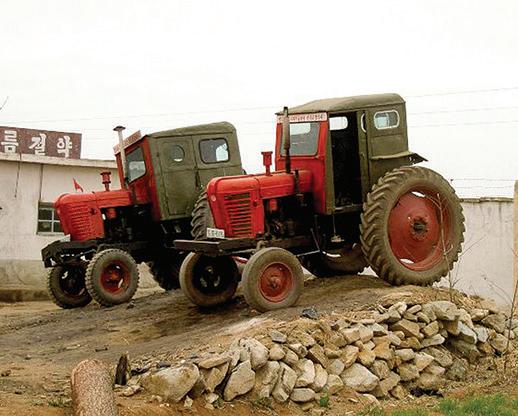
GN: North Korea is such a closed society; does that not make it extremely difficult to do research on such a country? And so little of what is written about North Korea is written in English.
Moe Taylor: It is definitely always a challenge to do research on North Korea. One of the ways historians like myself get some of the information we are after is via other countries that once had close relations with North Korea – the Soviet Union, or East Germany, for example. Since those socialist regimes have collapsed, the contents of their foreign affairs archives have been made available to researchers. So, for example, we now have the records of closed-door meetings between the North Korean government and its foreign allies, and the reports of diplomats involved in high-level cooperation with North Korea. That is just one example of how historians compensate for the inability to really do research in North Korea.
GN: You have argued that there are grounds to be optimistic about North Korea’s future, particularly in relation to the environmental and agricultural challenges it faces. What is the case for this optimism?
Moe Taylor: Generally speaking, North Koreans value their natural environment and recognize the importance of protecting it. They also have a certain faith in what can be achieved through scientific research fueling innovation and adaptation, and a strong desire to be more involved in international scientific collaboration. North Koreans are very keen on renewable alternatives to fossil fuel, sustainable agriculture, green building, and the blue economy. There is little reason to doubt that, given the necessary resources and opportunities, North Koreans would embrace radically new approaches to food and farming. But North Korea is
also very isolated and under the harshest sanctions in the world, so the real question is whether the international community wants to help or hinder such progress.
GN: Your research grant and your stay in Gwangju are now ending. Do you have thoughts of possibly returning to South Korea again to do more research on North Korea?
Moe Taylor: I do not want to leave!
GN: I know what you mean! Is there anything else you would like to share about Gwangju?
Moe Taylor: One of the most enriching experiences I have had in Gwangju was too meet survivors of the Gwangju Uprising and hear their stories. It reminded me of the importance of remembering and learning from our elders.
GN: Thank you for this interview, Moe. I wish you the best as you return to Canada and hope you do get a chance to return to Gwangju in the not-toodistant future!
gwangjunewsgic.com Gwangju News, January 2023 17
Interviewed by David Shaffer. NK tractor photos by Juergen Nyhuis (2004) on Flickr.
▲ Somewhat later model of the NK Chollima 28 tractor.
Gwangju Punk Band Dirty Rockhon
Seeking Out Happiness in a Dirty World
By Jon Dunbar
It’s been about 15 years since Dirty Rockhon played its first show.
The Gwangju-based punk band first started playing shows under the name “Pping,” which its frontman Yang Hong-joon explained was a term for a flashbang grenade in first-person shooter video games. “We wanted the name to mean our music would blow out your senses,” he told the Gwangju News.
But after they started playing shows, people suggested they change the name, pointing out it also means stealing other people’s money. The band members were open to a name change, and they settled on Dirty Rockhon, derived from the phrase “happy souls even in a dirty world” (더러운 세상에도 즐거운 영혼).

Gwangju News, January 2023 gwangjunewsgic.com 18 FEATURE
It’s a name that stands out, even if it doesn’t roll off the tongue (unless you’re familiar with Hanja), but it fits the band’s style well.
The band describes its music in online bios as “seomin punk,” with seomin meaning “the commoner class or ordinary people.” But it’s not to be confused with working-class pride, a common theme among many other punk bands.
“It would be more comfortable to think of it as empathy or support for ordinary people who are slaves to money. They make money to afford the basic needs of life, but there are many different things they want to do in the end,” Yang said.
But Yang also doesn’t want to think too much about genre or take genre boundaries too seriously. “I think music genres are a good thing for intellectuals, so I don’t want to be limited by genre, although our songs are punk,” he said.
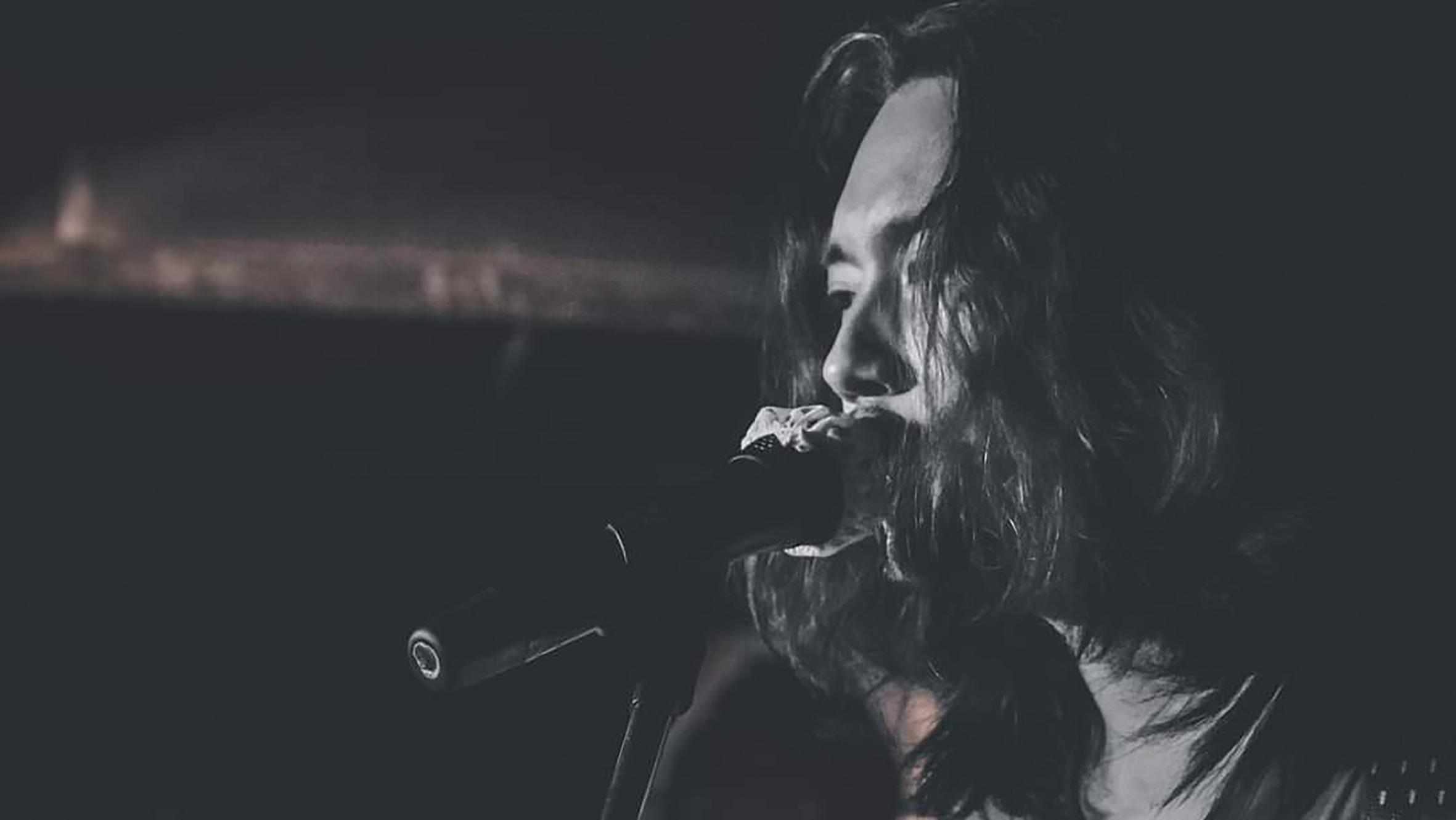
“I just want our songs to be heard by people who are struggling with life. The lyrics of our songs express emotions we can feel in everyday life, such as misery, reflectiveness, or whipping ourselves, without hesitation, and the overall atmosphere aims to create a pleasant vibe. We want to express ‘music is fun’ rather than ‘I am good at music.’”
Yang first got into this music in 1998 when he was in the second grade of middle school, after seeing a video on TV of Crying Nut’s infectious hit song Ride a Horse.
“At that time, the internet was not as popular as it is now, so I went to the record store to buy a Crying Nut tape,” he said. “I couldn’t buy a CD because I was a student.”
A year or two later, Yang got to see Crying Nut perform in person when the band came to Gwangju for a rock festival on May 18.
“When I was young, I had family problems, and there was only anger and social dissatisfaction in the world, and I started to rediscover joy in life through music,” he said.
Yang’s own music bears some similarities to Crying Nut’s sound, that sort of tenacious now-ness that can be seen as eccentric or the work of specific personalities, depending on who’s looking and how in touch they are with real day-to-day life. Dirty Rockhon’s songs feel like a soundtrack to a mundane life, at least in the more self-aware and cathartic moments. It’s punk music, which can get a bit aggressive at times, but it’s also down-to-earth and approachable.
gwangjunewsgic.com
News, January 2023 19
Gwangju
By 2006 when Dirty Rockhon began to take shape, Yang said music culture was starting to shift away. “Hip-hop music was already prominent in Korea, but band culture was not dead yet, so there were enough people coming to shows,” he said. “Although EDM music is popular now, I want to keep alive the rock band culture of my school days and youth.”
But since then, things have only gotten worse for the local scene.
“It is no exaggeration to say that the band scene in Gwangju is dead,” Yang told me in a 2018 interview,
adding that Gwangju bands are playing more shows outside the city than in their hometown, and not enough Gwangju citizens know about the local scene.
“I would like to tell the citizens of Gwangju about the diversity of culture, that is, musical diversity, but it is not easy in Gwangju,” he said. “Nevertheless, we are singing today, dreaming of the revival of the local scene in Gwangju.”
In 2015, Dirty Rockhon began the Sagae (Four) Rock concert series, organizing a show timed with the opening of every season, four times each year, hoping to build momentum. The Sagae Rock shows moved around to different venues each time, and invited Gwangju bands as well as promoting local bands to play in other cities and bands from other cities to come to Gwangju.
Unfortunately, the environment for live bands has continued to deteriorate, especially during the pandemic, which for the last almost three years has placed heavy restrictions on live gigs. “It is no exaggeration to say that the Gwangju scene has been becoming more and more desolate,” Yang said in a recent interview, pointing out the recent breakup of existing local bands, as well as the domination by corporate-backed acts of the indie band corner on music charts. “Compared to the consumption of pop music culture, the consumption of indie band culture, which is not even as much as the blood of
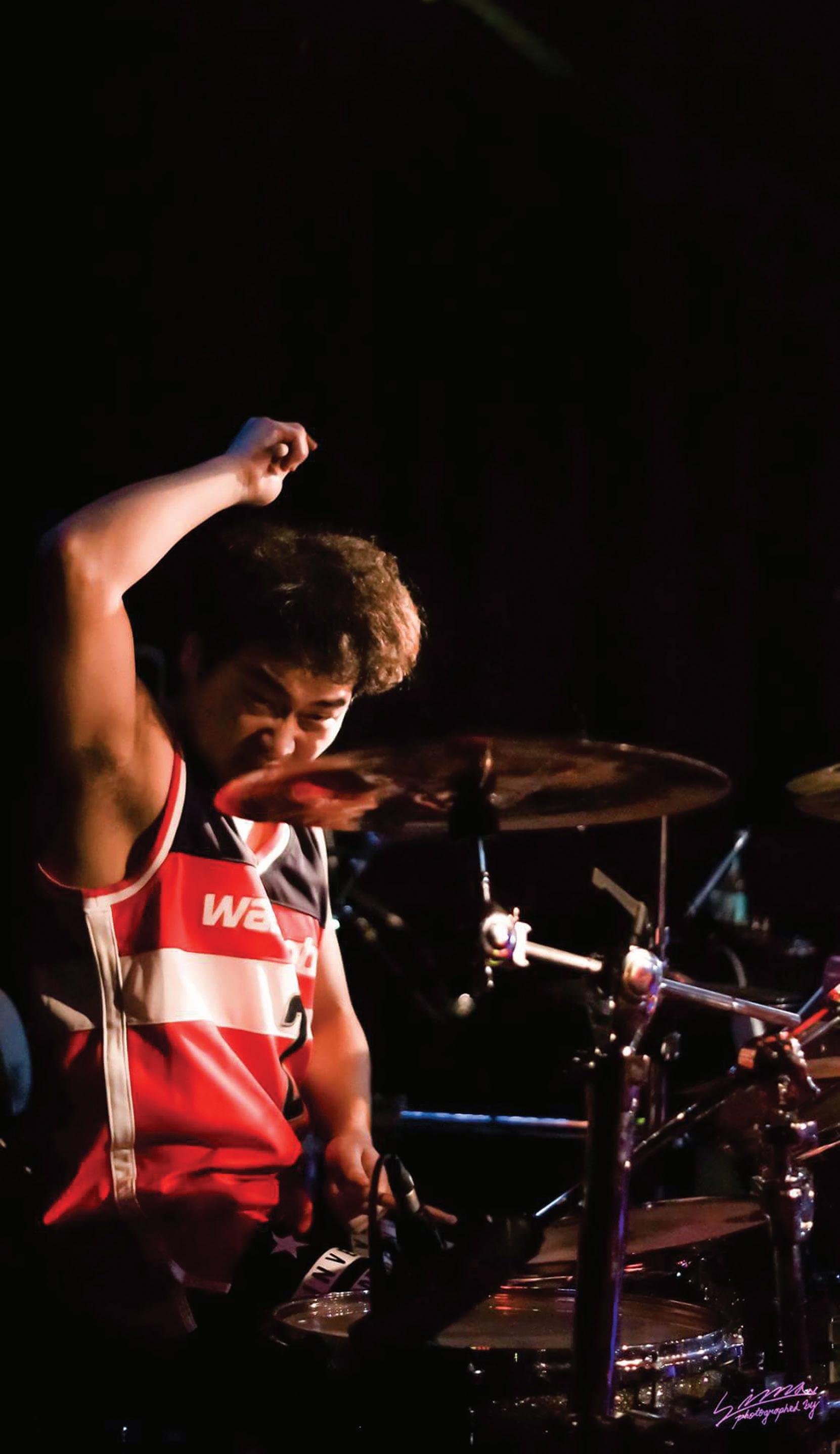
20
“I would like to tell the citizens of Gwangju about the diversity of culture, that is, musical diversity, but it is not easy in Gwangju. Nevertheless, we are singing today, dreaming of the revival of the local scene in Gwangju.”
a newborn, is an inevitable phenomenon, and the remaining bands are holding on by a thread.”
Dirty Rockhon has been able to play only three to five times a year since the pandemic began. “If a show poster was posted on social media, the band would get harassing messages from strangers,” Yang added. Also, the Sagae Rock concert series has been suspended since the start of the pandemic. After a hiatus, Dirty Rockhon is ready to come back. The band lost a drummer, but lucked out in recruiting a replacement.
“These days it’s hard to find actual drummers because anyone can make a midi with a laptop and an audio card,” Yang said. “Fortunately, I was able to get a new drummer easily this time because another band in Gwangju broke up and we grabbed up their drummer.”
Yang said the band’s goal now is recording its first full-length album.

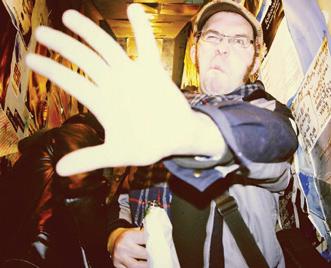
“We’ve only released EPs and digital singles so far, but we don’t have a full-length album yet, so we’re going to start working on one soon,” he said.
“I just want to do music that ordinary people who are going through daily life like cogwheels can sympathize with and enjoy together by thinking about what kind of pleasures they can find in it. Even if you don’t have a golden spoon, even if you don’t have enough money in your wallet, you can be happy because your heart is rich.”
Visit fb.com/dirtyrockhon or Instagram @ dirtyrockhon_official for more information or go to youtube.com/DirTyRocKHoN to hear their music.
The Author
Jon Dunbar is a member of the Gwangju International Center living in Seoul. He is also a council member of the Royal Asiatic Society Korea and a copyeditor at The Korea Times. He has been publishing his punk zine Broke in Korea since 2005, and in 2020 he published the novel Hongdae Fire
gwangjunewsgic.com Gwangju News, January 2023 21
Casualties of the “Crust Belt”
By Isaiah Winters

Gwangju News, January 2023 gwangjunewsgic.com 22 FEATURE TRAVEL
Lost in Honam ▲ Like a scarecrow, this crane keeps watch over a paddy of rotten apartments. gwangjunewsgic.com
To kick off the new year, we’ll unshelve our trusty Farmers’ Almanac and put its sage guidance and folksy humor to good use in the pursuit of understanding Korea’s modern agricultural craze: sowing apartment complexes in the middle of nowhere. What could possibly go wrong? So, without further ado, let’s hop in the car and head to the countryside – oh, and feel free to ask any questions along the way…….
Ahh, rural Honam. See over there? If you squint intently at the horizon, you may just spot a half-dozen
husks of concrete sprouting from the plain’s vast and fertile apartment paddies.

“Oh, I do see those. That didn’t take long!”
Right. As their prevalence suggests, apartments are the cash crop of choice nowadays, as they more efficiently feed a growing and ever-hungrier economy. However, it’s not all fun and games for apartment farmers. Sometimes they suffer from financial droughts, development depletion, or just have a bad yield. This makes the economy sad, prompting it to move on to greener pastures.
“But what happens to the failed apartment crop – is it simply abandoned to rot in the fields?”
Sadly, yes. Those barren apartment stalks in the distance have been rotting in those fields for 20 years. It takes a long time for them to fully degrade, and the locals, none of whom are apartment farmers themselves, can’t do much about it. They simply have to live with their community’s newfound apartment blight. That’s the price they pay to live in the shadow of our modern economy. To be fair, the modern economy is indeed amazing, making life better in almost countless ways – but it’s also prone to sudden bouts of absence, depression, and even blind rage.
“Well, can the locals petition the farmers to continue sowing those fields or perhaps even restore them to their natural form?”
For the most part, no. Usually, only apartment farmers can influence the behavior of other apartment farmers, or if the economy and its buddies get involved, things can change that way, too. Individual apartment consumers themselves aren’t very powerful, unfortunately. When a crop fails, they’re just expected to suck it up and be grateful that the farmers tried to cultivate anything in their communities at all. In that respect, the crumbling apartments and fallow fields are almost like trophies to what could have been. It’s a unique part of the new economic landscape, what experts today call casualties of the “Crust Belt.”
“In that case, are any apartment farmers at least trying to replant those fields somehow?”
gwangjunewsgic.com Gwangju News, January 2023 23
That’s a good question. There actually is one article online about this apartment farm’s current status. It appears that now, on the twentieth anniversary of the crop’s failure, a certain Mr. Kim has successfully petitioned the local government for a change in the housing business plan, that way cultivation can resume. The problem is that the apartments have rotted so much that the local government believes a building safety diagnosis must be conducted before any new soil is tilled.
“Wow, apartment farming is a lot more complicated than I expected!”
Indeed. And get this – recent legal changes have allowed local government officials to condemn and plow up fields of rotting apartments if they’re deemed a high enough risk for accidents, so we’ll have to see what their safety inspection yields before we know what will happen next. That alone will probably be a long, drawn-out process. But even if the crops aren’t
uprooted by government decree, then newcomer Kim will have to begin the next task: settling the ongoing lien disputes associated with the farm.
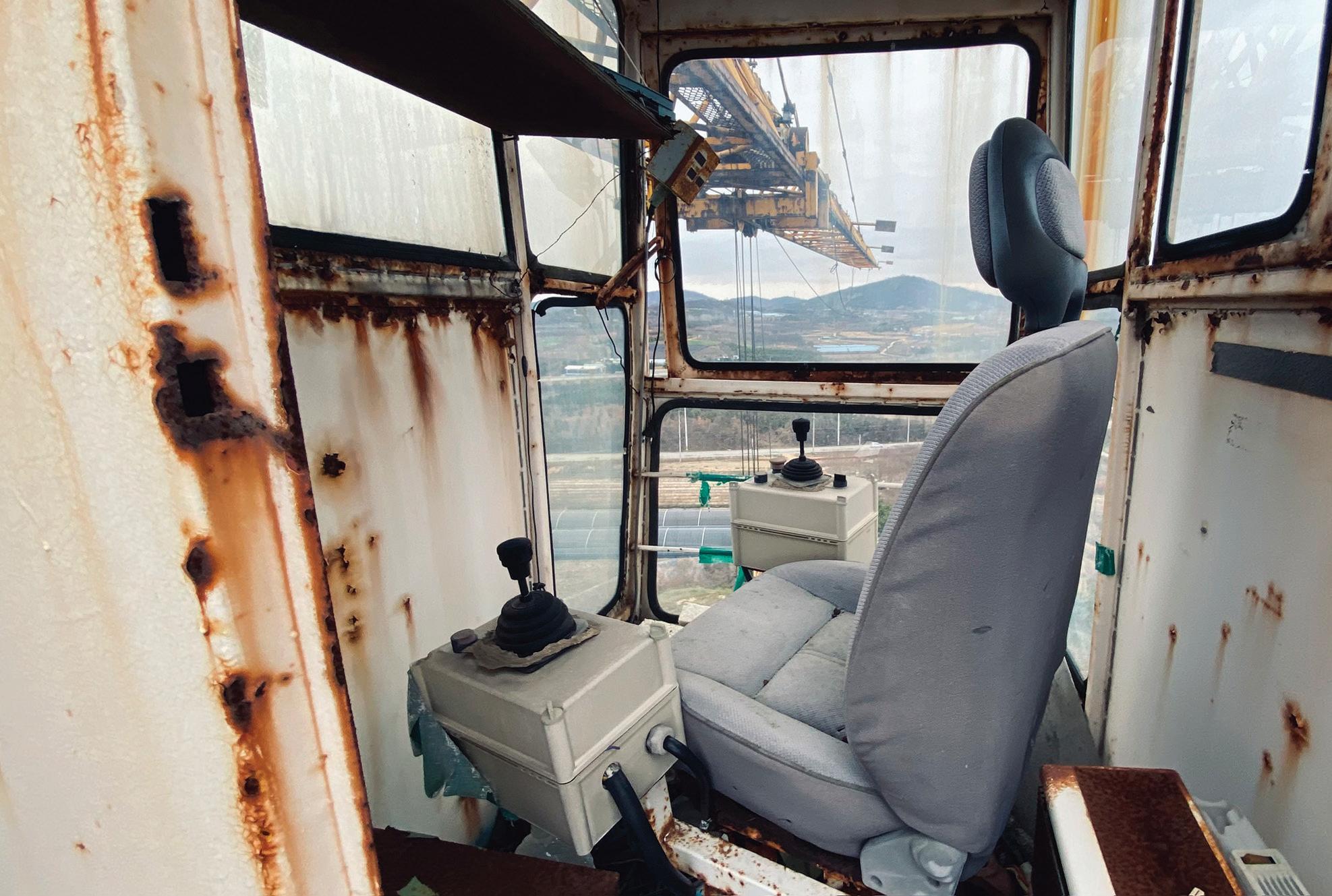
“Oh, dear. There are messy, 20-year-old lien disputes to plow through, too?”
Yeah. In fact, if you visit the farm and see the rotting apartment stalks up close, you’ll notice giant “lien graffiti” messages spraypainted everywhere, and they don’t say nice things about the previous farmer. They even include his name and phone number in giant letters that everyone in the local community can read. From time to time, the previous farmer will come and paint over the graffiti to protect his identity, but then someone else comes along and repaints the messages. It’s like an online message board argument that scrolls on and on, only it’s the size of an apartment. It really adds a splash of color to the otherwise blighted surroundings.
▲ Inside the scarecrow’s empty head.
Gwangju News, January 2023 gwangjunewsgic.com 24
“Well, if nothing comes of this entire effort to replant the land, can the locals at least use it for something so that it’s not a complete waste?”
Not really. Some locals might sow a little tract or two as a secret hobby farm, but if the apartment farmers find out, they might get angry. That’s probably why they kept that giant construction crane on site – it’s like a big scarecrow that wards off potential newcomers to the area. The birds sure are happy to make nests in the area, however, and the local flora are having a field day growing in peace – especially reeds, which have beautiful plumes this time of year. Oh, yeah, and the apartment
rot makes for very bleak photoshoots that loner photographers can enjoy, too.
“Then I guess that’s better than nothing.”
Yes, I agree. Hey, look! There’s another one…….
As per usual, readers, if you’re interested in this sort of topic and want to see more, head over to the Lost in Honam YouTube channel for the video version of this and prior articles.
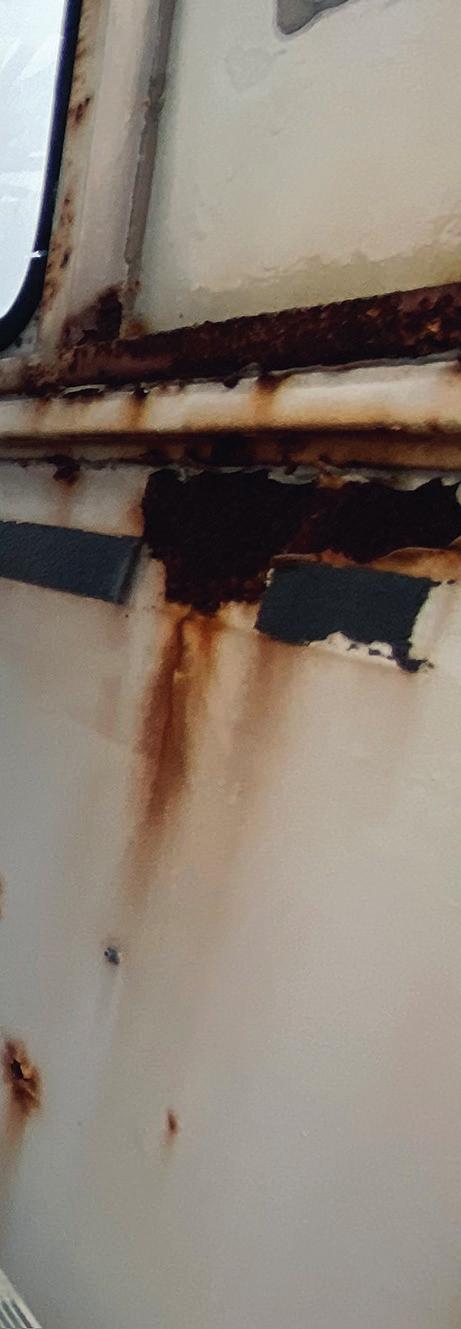
The Author

Born and raised in Chino, California, Isaiah Winters is a pixel-stained wretch who loves writing about Gwangju and Honam, warts and all. You can see some of his unique finds on Instagram @d.p.r.kwangju and YouTube at Lost in Honam.

gwangjunewsgic.com Gwangju News, January 2023 25
▲ Mr. Kim’s tireless efforts may yield new crops here one day.
“
It’s a unique part of the new economic landscape, what experts today call casualties of the ‘Crust Belt.’ ”
Special Interest Groups for English Teachers
There is a new guy in town, though he is not new to Korea or to Korea TESOL. Taking up a new position at the Gwangju Institute of Science and Technology (GIST) is Reece Randall. He is also the new second vice-president of KOTESOL, and one of his roles in that position is to oversee the organization’s special interest groups (SIGs). In this interview for the Gwangju News, we ask Reece, among other things, to explain what SIGs are and how they work. — Ed.

KOTESOL: Thank you for this interview with the Gwangju News. I believe you are fairly new to Gwangju and GIST, the Gwangju Institute of Science and Technology. To begin with, how do you find Gwangju?

Reece Randall: Thank you for inviting me to do this interview. I am thrilled to share a bit about myself with Gwangju News readers. Since arriving this summer, I have found Gwangju to be welcoming, global, and creative. Welcoming and global in the sense that Gwangju’s diverse people have treated me with warmth and hospitality in sharing and exchanging local and international culture and communication. Creative in the sense that I have started learning about Gwangju’s rich historical foundation on which a thriving, futureoriented, arts and culture scene is based, with innovative educational programs, cultural festivals, museum exhibitions, gallery exhibits, creative socials, theater performances, and cuisine that reflect how proud and expressive Gwangju citizens are. As a firm believer in global citizenship, consider me impressed.
KOTESOL: And what about GIST – is your teaching situation there much different from your teaching situation at your previous workplace in Gangwondo?
Reece Randall: My current teaching situation involves teaching English writing and presentation courses for science and engineering students at a public institute of science and technology. At my previous workplace, I taught communicative English in a division of liberal arts and general education at a comprehensive national university in Gangwon-do. Currently, the courses I teach focus more on English for specific purposes (ESP) and English for academic purposes (EAP) in science and engineering. While my current context has a more specialized focus and STEM-oriented objectives for my instruction, my primary goal of students attaining competence and

Gwangju News, January 2023 gwangjunewsgic.com 26 TEACHING
LEARNING
&
Language Teaching
An Interview with Reece Randall
▲ Reece Randall
▲ Reece leading an English Book Club extracurricular meeting at GIST last fall.
proficiency in English communication for personal and professional success has remained the same.
At GIST, I am a faculty member of the Language Education Center (LEC) department, which offers an extensive range of courses as well as extracurricular activities and programs for graduate and undergraduate students. The mission is to provide GIST students with the best possible learning environment to help them confidently develop and expand their language skills and abilities in their respective research fields. Beyond teaching English credit courses (writing and presentation) for science and engineering students, I lead personalized English clinic (one-on-one) sessions, teach freshman camps, and host extra-curricular activities (such as workshops, clubs, and contests) on select Englishrelated topics or skills. Through these courses and programs, my current role is to help students achieve their academic and professional goals as scientists and researchers.
KOTESOL: How do GIST and other institutes of science and technology differ from general universities?
Reece Randall: GIST, DGIST, KAIST, and UNIST are all public institutions dedicated to research in science and technology. These predominantly research-oriented universities were established by the Korean government to contribute to society through the research, development, and advancement of science and engineering. The education and research programs at these institutes are highly specialized and oriented toward STEMrelated fields. General universities will typically offer comprehensive degrees in both STEM and nonSTEM areas, such as humanities, social sciences, medicine, arts, and physical education.
KOTESOL: You were recently elected second vicepresident of Korea TESOL for the coming year. Congratulations! One of the duties of the second vice-president is to oversee the organization’s special interest groups (SIGs). Would you explain what SIGs are and how they differ from KOTESOL’s chapters?
Reece Randall: Thank you! I am sincerely grateful to be in a position to serve the KOTESOL community by overseeing and assisting the SIGs and KOTESOL

Teacher Training (KTT). As outgoing Gangwon Chapter president and newly elected second vicepresident of Korea TESOL, I have seen firsthand how important both SIGs and chapters are in organizing events and providing resources that meet the needs of members in the field of Korean English education. As the name may suggest, KOTESOL’s special interest groups are communities of English teaching professionals sharing a common interest, such as research, social justice, or reflective practice. This differs from KOTESOL’s chapters, which are communities primarily organized by province or geographical region. KOTESOL members can volunteer to join their local chapter, while also participating in their chosen SIGs as members or leaders.
Many SIGs provide resources and create presentations, workshops, and seminars, while also working with chapters and other groups to hold events in Korea. In recent years, KOTESOL’s special interest groups have included Young Learners and Teens, Women and Gender Equality, Research, Reflective Practice, Professional Development, People of Color Teachers, Multimedia and Computer-Assisted
gwangjunewsgic.com Gwangju News, January 2023 27
▲ Reece at the Ipseok-dae colonnade, pillar-shaped joined cliffs overlooking Mudeung-san National Park, in November 2022.
Language Learning, Environmental Justice, Social Justice, Content-Based Instruction, Classroom Management, Christian Teachers, and Critical Thinking. Some groups are currently inactive, and many are seeking facilitators and members on an ongoing basis. More information is available on the KOTESOL website and some SIG-specific Facebook groups.
KOTESOL: What plans are you making for the SIGs for the coming year?
Reece Randall: There are numerous SIG-related plans in the works that I am excited about in the coming year! Building on the connections and suggestions members made during the 2022 KOTESOL Connections Day I helped organize here in Gwangju this fall, we are planning a series of SIG meetings in the coming months to outline, discuss, and ultimately facilitate a strong SIG presence at the hybrid (Seoul and online) 30th KOTESOL International Conference (IC) on April 29–30, 2023. In collaboration with the IC organizing committee, we are planning to give SIG leaders and members opportunities to secure dedicated SIG session slots and participate in the vetting process for proposals tagged under their SIG. Through the KOTESOL Teacher Training department, we are also planning to offer support in gathering presenters from Korea and abroad when requested. To encourage greater awareness, participation, and involvement in SIGs from KOTESOL members, we plan to work with KOTESOL’s Publicity Committee to help SIGs put out calls for new leaders and members and promote upcoming events. Finally, I am looking forward to organizing SIG social events to help members get to know coordinators, exchange ideas, and encourage team building.

KOTESOL: Are SIGs useful in providing materials or ideas for teaching EFL classes?
Reece Randall: As their main interest is connected in some way to English teaching, KOTESOL’s SIGs are very valuable sources of materials and ideas for teaching EFL classes. For their respective areas of interest, SIGs have set up appropriate platforms, coordinated events, or selected facilitators to enable the exchange of teaching ideas, resources, and expertise. For example, I was conducting
CALL-related research as part of my interest in integrating educational technology and media into my EFL classroom, so I attended a roundtable event coordinated by the Multimedia and ComputerAssisted Language Learning (MCALL) SIG at the 2022 KOTESOL IC. The discussion and resources shared were immediately applicable to my EFL research and teaching. I recommend contacting the facilitator of the SIG you are interested in for more information about SIG-related events and resources for teaching EFL classes.
KOTESOL: If there is at present no SIG catering to the interests of a group of teachers, how could they go about creating such a SIG?
Reece Randall: KOTESOL very much welcomes applications from members for the creation of new SIGs or the restarting of inactive SIGs as part of our going mission of “Teachers Helping Teachers.” SIGs can be created if their main interest is related in some manner to the teaching of English, and with the approval of the KOTESOL National Council. Applications should include a statement of purpose, a list of proposed activities, planned undertakings
Gwangju News, January 2023 gwangjunewsgic.com 28
▲ Reece at the summit of Jiri-san, Korea’s first and largest mountainous national park, in October 2022.
during the first year, a list of approximately 20 current KOTESOL members interested in becoming active in the proposed SIG, and information about founders and the selection of SIG facilitators (leaders). For more details about submitting applications for National Council approval of a newly proposed SIG, members can get in touch with me at 2vp@koreatesol.org.
KOTESOL: How do the members of a SIG “meet” to exchange ideas, etc.?
Reece Randall: Facilitators, members, and/ or presenters for each SIG decide the format and structure of meetings and communication. During the pandemic, SIGs have set up Facebook groups and scheduled online meetings via Zoom to facilitate participation from both local and international members. Many host sessions as part of KOTESOL chapter events or national and international conferences. These sessions have
included workshops, dialogues/roundtables, panel discussions, poster presentations, and colloquiums. Some SIGs have published monthly, quarterly, or annual periodicals, such as newsletters, to share ideas and engage with members.
KOTESOL: What plans do you have for the future? Are you planning on a long stay in Gwangju?
Reece Randall: I am planning to live and work in Korea for the foreseeable future. I would be thrilled to continue teaching and researching at GIST for the next few years and hopefully make Gwangju a home away from my home country of South Africa. In the field of English language teaching, I am planning to collaborate with teachers and researchers in sharing resources and publishing academic research. As a lifetime member, I am confident that KOTESOL will continue to be a significant part of my research and professional development, as well as provide a meaningful sense of community and collegiality.
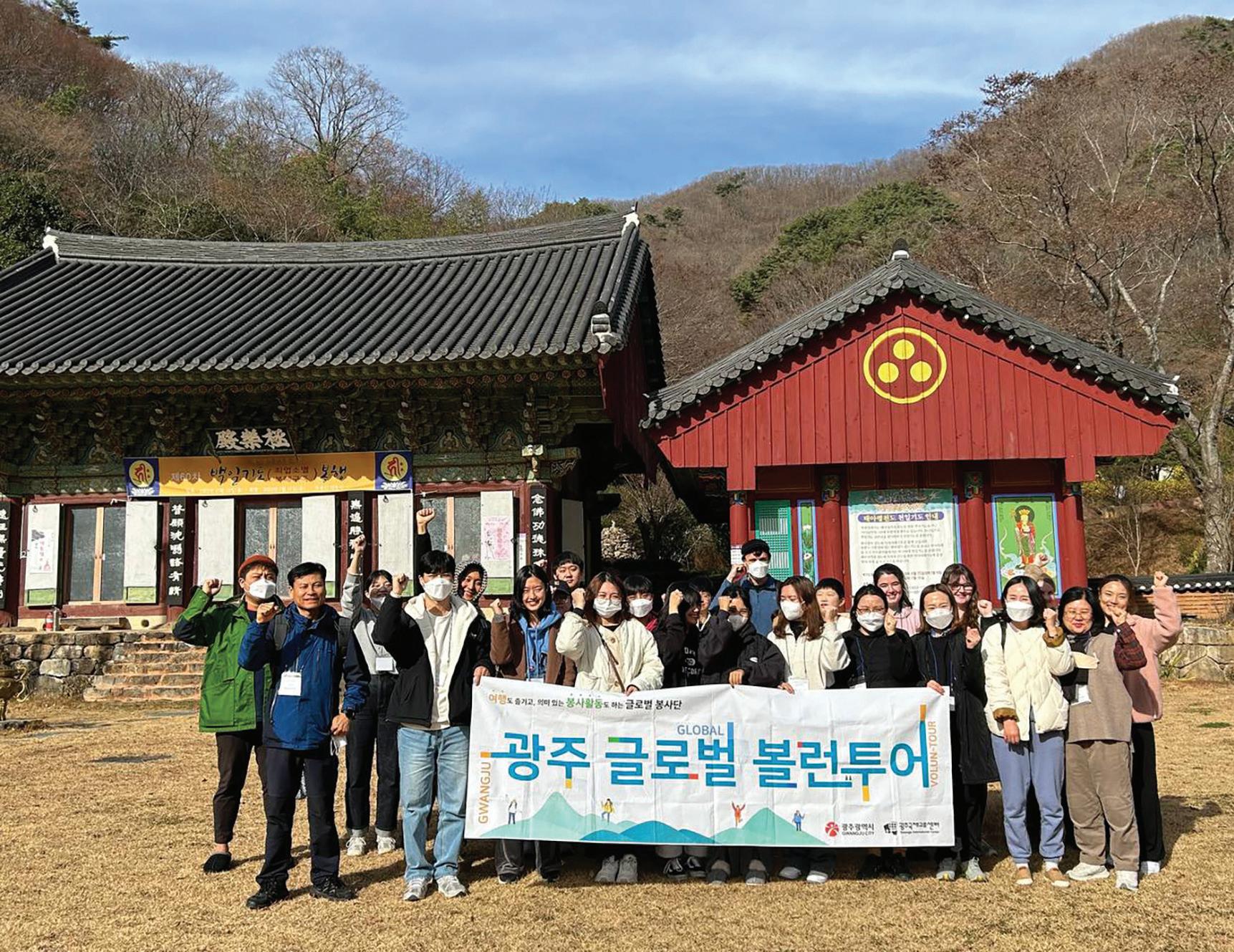
gwangjunewsgic.com
News, January 2023 29
Gwangju
▲ Reece with the GIC Volun-Tour group during the November trip to Daewon Temple in Boseong, Jeollanam-do.
KOTESOL: What would you like to see KOTESOL do in the coming years as the pandemic nears its end?
Reece Randall: I share the excitement many members have expressed with a return to many face-to-face events. At the same time, I am also looking forward to KOTESOL continuing to offer a combination of in-person, hybrid, and online offerings as needed. The past few years of the pandemic have made us more aware of online tools and resources, particularly technology applications and platforms that have enhanced the accessibility of conferencing and events for members based locally, nationally, and internationally. I believe the pandemic has challenged KOTESOL to grow and develop its capacity to deliver dynamic and innovative conferences using technology. I think the hybrid 30th Korea TESOL International Conference will showcase all that we have learned from the pandemic, while also breaking new ground as our first hybrid event. I would like to see the hybrid format facilitating new and improved exchanges among scholars, instructors, and students in line with the theme of advancing collaboration.
KOTESOL: What do you like to do outside of the classroom? Are there any other hobbies or activities you are planning to pursue during your time in Gwangju?
Reece Randall: I like to participate in English book clubs, attend Korean language classes, hike provincial and national parks, cycle coastal and river paths, as well as explore local cuisine and culture. Soon after my arrival here in Gwangju, I became a member of the Gwangju International Center (GIC) and began actively participating in classes, programs, and events. I have found it to be a fantastic introduction to the inclusive global community and rich cultural exchange that occurs here in Gwangju. I thoroughly enjoyed the global food and culture during Gwangju International Community Week in October. I also enjoyed the GIC Volun-tour trip in November to Daewon Temple in Boseong, which was my first temple stay experience in Korea. The two-day program included visiting Seo Jae-pil’s birthplace, performing 108 bows, meditation, touring the Tibetan Museum, as well as sampling local tea and Tibetan temple food.
I plan to continue to get involved with GIC Voluntour (volunteer + tour) programs and events such as hiking, cycling, and temple stays. If time allows, I plan to continue attending the global cultural and language classes the GIC offers every semester. As a global citizen, the GIC’s mission of sharing and exchanging culture and communication very much aligns with my interests and values.
KOTESOL: You sure are a busy man – in your free time as well as in your teacher organization volunteer work and with your school work! Thank you for making time for this interesting interview.
GWANGJU-JEONNAM KOTESOL UPCOMING EVENTS
• January 14, 2023: Monthly Workshop (at GNUE) Check the Chapter’s webpages and Facebook group periodically for updates on chapter events and other online and in-person KOTESOL activities.

For full event details:
• Website: http://koreatesol.org/gwangju
• Facebook: Gwangju-Jeonnam KOTESOL
David Shaffer has been involved in TEFL, teacher training, and research in Gwangju for many years. As vice-president of the Gwangju-Jeonnam Chapter of KOTESOL, he invites you to participate in the chapter’s teacher development workshops and events (online and in person) and in KOTESOL activities in general. He is a past president of KOTESOL and is currently the editor-in-chief of the Gwangju News.

30
Gwangju News, January 2023 gwangjunewsgic.com
The Author
Interviewed by David Shaffer. Photographs courtesy of Reece Randall.
Everyday Korean
Episode 61 우물 안 개구리
A Frog in a Well
 By Harsh Kumar Mishra
By Harsh Kumar Mishra
The Conversation
정민: 너 혹시 지수 알아?
Jeongmin: By chance, do you know Jisoo?
멍지에: 신입 지수 말씀이세요? Meongjie: The newcomer Jisoo?
정민: 응, 그 얘가 정말 우물 안 개구리 같다. Jeongmin: Yes, he seems to be a narrowminded person.
멍지에: 왜요? 들어오지 한 달도 안 됐는데 뭐라고 했어요?
Meongjie: Why? It hasn’t even been one month since he joined. Did he say something?
정민: 아니, 나한테 어떻게 하지는 않았는데 그는 외국인에 대한 선입견이 있는 것 같아.
Jeongmin: No, he didn’t say anything to me, but he has this prejudice towards foreigners.
멍지에: 어떤 선입견?
Meongjie: What prejudice?
정민: 외국 문화를 잘 받아들이지 않고 자주 단점만 지적해.
Jeongmin: He isn’t accepting of foreign cultures and keeps finding negatives about them.
멍지에: 아마 외국인을 많이 못 만나서 그럴 거예요.
Meongjie: It’s maybe because he hasn’t met many foreigners yet.
Grammar Points
~는데: This grammar point is used with verbs and adjectives of a first clause to give background for a second clause. Depending on the situation, the first clause can be contradictory to the second clause.
Use ~는데 with verbs and ~은데 with adjectives when they end in a final consonant (받침, batchim), and use ~ㄴ데 when adjectives end in a vowel.
Examples: 저는 한국어 발음을 잘하는데 문법 공부가 너무 어러워요. I am good at Korean pronunciation, but studying grammar is very difficult.
오늘 날씨가 좋은데 소풍 갈까요? As the weather is good today, shall we go for a picnic?
Column Update:
Following the “Idioms” series of 2022, I am starting a “Proverbs” series in 2023 which will cover frequently used proverbs and their usage. Our first idiom is “a frog in a well.”
우물 안 개구리: This frequently used proverb literally means “a frog in a well” and is used to describe a person who is narrow minded or of limited scope.
Examples:
몇년 전까지 내가 우물 안 개구리였다. I was a narrow-minded person just a few years ago.
우물 안 개구리가 되지 않으려면 책을 많이 읽어야 한다. If you do not want to be a frog in a well, you should read a lot of books.
Vocabulary
우물: well, 개구리: frog, 신입: newcomer, 들어오다: to enter, 외국인: foreigner, 선입견: prejudice, 문화: culture, 받아들이다: to accept; to receive, 단점: negative points, 지적하다: to point out, 만나나: to meet
gwangjunewsgic.com Gwangju News, January 2023 31 TEACHING & LEARNING
Learning Korean
Montessori Education I
What Is the Most Important Education Factor for Children?
By Kim Yul
Education has several purposes. It is to guide learners in the right direction and deliver various types of information and knowledge to them to make a better society. The precondition for this starts with making all learners independent human beings. Children are constantly in need of assistance right after they are born. Since children’s behavior and instincts are not yet attuned to the concept of doing something on their own, they rely on their parents and express themselves by crying. When they reach the stage of infancy and can
use their hands and feet, they try to touch, check, and feel everything. They prepare to be reborn as independent entities through the act of resolving their curiosity about the environment surrounding them and their inherent, inquisitive mind.
In the Montessori philosophy of education, the concept of a “prepared environment” is emphasized to encourage these children's physical and mental independence. “Prepared environment” refers to the overall factors provided so that children can engage

Gwangju News, January 2023 gwangjunewsgic.com 32 TEACHING & LEARNING
32
in activities to satisfy their desire for exploration and learning on their own. Through this environment, children do not only gain knowledge and information but focus on learning the right habits and lifestyle to live their lives. For example, while learning various life skills such as organizing, self-care, environmentcare, order, community, sociality, and independence, they are realizing that they are independent human beings and develop the concept of self-awareness. Intrinsic curiosity is the main trigger for children at this age, and they motivate themselves to absorb everything around them.

This type of learning in early childhood disappears rapidly from the beginning of adolescence. Perhaps it is because competition, which occurs naturally through tests and grades, becomes the main situation for learners. Intrinsic curiosity to constant exploration is lost to competition, and therefore, opportunities for motivation are also reduced. The less motivation children have, the less active they become. Passive children lose their ability to think, lose their creativity, and eventually get lost. The most important things in teaching in a Montessori classroom are interest and motivation. If these two conditions are not satisfied, then educators will not produce the results they seek, even if they deliver quality lessons. Emphasizing the importance and necessity of whatever the learner is trying to achieve should come first. This is the motivation and educational condition that should be given the highest priority. Are they motivated to learn? Are they learning for themselves or for a test?
Korea is currently experiencing an extremely low birth rate. According to the latest census report (KOSTAT), the number of newborns in Korea during the month of July 2022 was about 20,000, a decrease of about 8 percent compared to July of last year, and the number of newborns in Gwangju was 575, a difference of about 20 percent from last year. This phenomenon could become a very big disaster in 20 years. Declining population brings a later decline in fertility rates, along with a decline in the labor force. In the end, the possibility of repeating this vicious cycle is strong. There are many reasons for this low birth rate, but the main one is the economic situation. It is not simply a problem of increasing living and childcare expenses, but the reality that education expenses are inevitably burdensome, and the intensifying competition in education and the increase in private education represent this. Given all this, we have reason to reexamine the state of education. We need to change the paradigm of education to not one of competition but one of practical life.
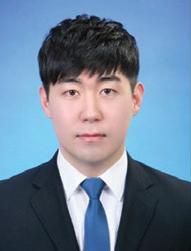
The Author
Kim Yul is originally from Gwangju and has taught in Cincinnati, Ohio, for many years. He is a Montessori elementary school teacher who believes education can change the world.
gwangjunewsgic.com Gwangju News, January 2023 33
Photos by Sigmund and National Cancer Institute on Unsplash.
“Intrinsic curiosity is the main trigger for children at this age, and they motivate themselves to absorb everything around them.”
Watching the World Cup in Gwangju
By Ellie Goodwin
Gwangju is a city known for its progressiveness and inclusivity, setting a precedent for less liberal cities in Korea; an ethos which makes it a popular destination for foreigners. Unsurprisingly, it has also been the perfect city to watch the World Cup, providing a safe and welcoming space for viewers, regardless of nationality, to support their team.
“One of the things I found out about Gwangju before moving here was just how friendly it is,” said expat Anna. “I watched the games at Sizzle and they even encouraged us to stay late and gave us free food. I’d
always feel comfortable walking into new places without the fear of being rejected by employees.”
The importance of respect is prevalent in everyday life and shows itself in sports, with Korea’s Son Heungmin being the epitome of good sportsmanship. The same can be said for the majority of Gwangju’s locals who have been following the World Cup.
“There’s been good feelings all round no matter who’s playing – I’ve not experienced any rowdiness at all,” says Matt Dudley.

Gwangju News, January 2023 gwangjunewsgic.com 34 34 COMMUNITY
Sports and Activities
For some expats, their World Cup experience in Gwangju is refreshingly positive in contrast to the more hostile, borderline xenophobic attitudes of their home country. “I’m not used to this. Back home, there’s always police around during football games because there’s issues between fans of opposing teams. It’s not like that in Gwangju – watching the cup here has been great,” said British citizen, Jenny.
Kieran Wright expressed a similar opinion. “It’s been friendly because nobody is taking it too seriously –not like in the UK.” Cities like Gwangju embody the best traits of supporters, which hopefully is an example that many will follow. “There’s less of a
anything about soccer, and that was the same for some of the Koreans I met that night. It was how we got to know each other – and we all ended up spending the evening together way after the game had finished,” said Grace Paige. The mutual interest in the World Cup has been the icebreaker between expat and local, helped by the friendliness of Gwangju’s residents and the power of sports in helping to dismantle cultural and language barriers.
“I saw one of the Korea games at Vinyl Bar and the atmosphere was incredibly friendly – I met lots of locals and ended up singing the chants with them, and we had a great time even though their English wasn’t great and my Korean is non-existent,” said New Zealander, Luke Armstrong, who has been supporting Korea during the World Cup. “The locals have been so welcoming and made me feel like I’m one of the group.”
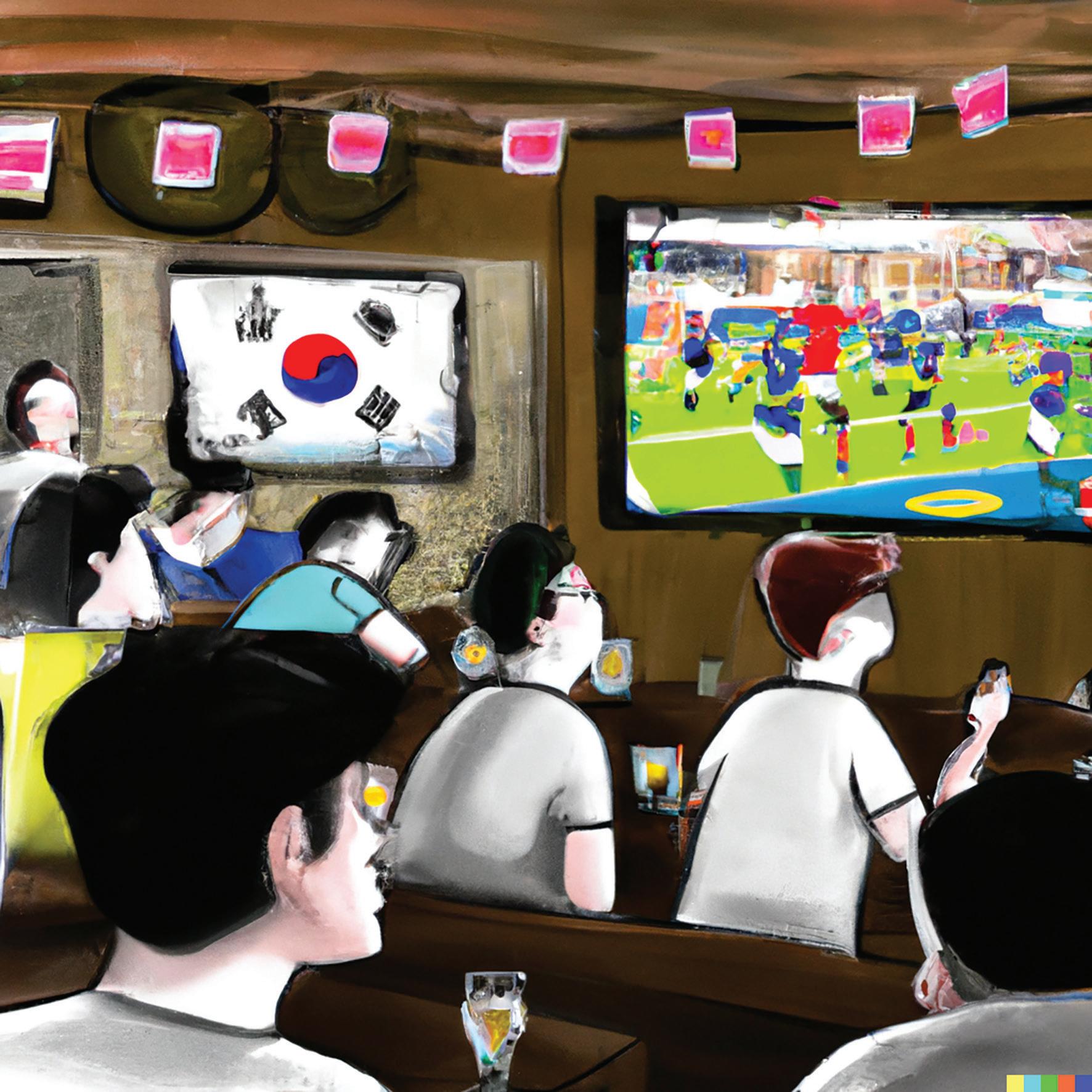
Businesses in Gwangju have shown their hospitality, not only by creating an atmosphere to be enjoyed by all viewers but also by extending their usual opening hours.
“Watching the games here has been very easy – lots of bars have aired games and hosted parties at 4 a.m., even if it’s not a Korean game, and even after they got eliminated,” shared Pedro Sanchez. “I think its great that sport has the ability to unite people in the way of embracing different cultures.”
All of these positive experiences will have a lasting impression among the expat community, who will favorably recall their time in Gwangju, perhaps encouraging others to consider relocating here, too.
football hooligan culture here as well as less racial and discriminatory vibes towards athletes and fans. Here, everything has felt a lot more wholesome,” added Jenny.
Not only has the foreign community been able to enjoy a hostile-free environment, it also has the opportunity to connect with locals. A shared language, similar backgrounds, and upbringings make it easy to surround oneself in an expat bubble, rather than taking the time to make Korean friends. “I was there for the experience – I don’t know
English teacher by trade and keen traveler the rest of the time, Ellie Goodwin has been to 36 different countries, lived in China for over three years, and has lived in Gwangju for ten months. In her free time, she enjoys (you guessed it) traveling, hiking, reading, and the occasional soju. Instagram: @elliee_goodwin

gwangjunewsgic.com
News, January 2023 35
Gwangju
Photo by Rhett Lewis on Unsplash.
The Author
How to Be a Rainmaker
By Chung Hyun-hwa
NO WATER, NO LIFE

It is said to take only three days for a person to lose their life without water, compared to 1–2 months without food, so there are a lot of disaster movies that describe the struggles to get water from scratch. In All Is Lost (2013) with Robert Redford, condensed water is collected by using a plastic bag because the protagonist was drifting in an emergency boat in a wide ocean alone. In Cast Away (2000) with Tom Hanks, rain or dew on leaves are collected when there were no fresh water sources on a remote, uninhabited island. In The Martian (2015) with Matt Damon, this stranded astronaut risks an explosion to get water through a chemical reaction using rocket fuel, or hydrazine.
In the 1970s and early 1980s in small towns in Korea, there were metal hand pumps in one corner of most homes to use ground water. The water would taste a little rusty in the beginning of pumping because the pumps were made of iron. In a small country village such as the one where my grandfather lived, there would be only one well in the middle, and all the village people would come to get water there. The
water tasted sweet, but it needed to be carried home by someone. If we go back just four decades, getting water meant investing much more effort and time.
THE WORST DROUGHT IN 50 YEARS
Now water seems to be all around and not as precious. It is difficult to feel like we are having a water shortage. However, the southern part of Korea is experiencing the most serious drought in 50 years, caused by insufficient rainfall in the summer that was as low as half that of other years. It is ironic that there was a disastrous flood in Seoul the very same summer. At this rate, there is the possibility of limiting the water supply in February. The last time this happened in Gwangju was in 1992. Some islands along the south coast are already experiencing a severe water crisis. Nohwado Island is known to receive water only one day a week.
Gwangju depends on four reservoirs for its water supply: Lake Juam, Lake Dongbok, Reservoir 2 and Reservoir 4. Out of these four, Lake Juam and Lake Dongbok are actually supplying most of the water to the city. However, in November 2022, the two lakes
Gwangju News, January 2023 gwangjunewsgic.com 36 36 COMMUNITY
Environment
were only about 30 percent full, which is half of the average water reserve. At this speed, Lake Dongbok will dry up by late March in 2023, and Lake Juam in mid-May, according to Gwangju City. The city is looking for ways to secure other water sources, like possibly the Yeongsan River and by drilling for ground water, but the easiest way is every citizen’s effort to cut down on water usage by 20 percent. A person uses an average of 300 liters of water each day, and if we follow these action points, it is possible to save up to even 40 percent of that amount. This will allow us to survive through this drought with the limited water reserve until we have rain in June again.
WATER PROBLEMS AND THE CLIMATE CRISIS
Scientists predict that in the future there will be more rain overall, and extreme torrential rains will occur more often. However, there will be more areas affected by droughts as well. This means it will not rain evenly on the globe. According to studies, every one degree Celsius increase in the temperature causes seven percent more water vapor in the atmosphere. More water vapor in the atmosphere means more energy supply to storms, so they will become more powerful. In the meantime, the land will lose more moisture because of the higher temperature, causing plants to dry. The decrease in green spaces attributes to the drought on land again. The hard, dry land will not absorb water to save for later, so the rainwater will go down to the rivers and the oceans too quickly, creating more floods, too. In other words, a vicious cycle of moisture distribution is being created. For quite a while, Korea seemed safe from water shortage, but it looks like we need preparation for the bipolar climate era.
In the long run, there should be more effort to reuse water or utilize rainwater more efficiently. Supplying tap water requires energy, so saving water means saving energy, too. I already put bottles into my toilet tanks, but while writing this, I decided to prepare a big water bucket to store reusable water for my plants or the toilet. I know this may not help to make your home most stylish, and it will take up more room, but later it will also help us to keep from wishing we were able to control going to the bathroom just every other day. Being mindful ahead of time is wisdom.
HOW TO BE A RAINMAKER
Saving water is the same as making rain. Below are suggestions from Gwangju City government that will allow us all to become rainmakers by saving water.


The Author
Chung Hyun-hwa is from Gwangju and led Gwangju Hikers, an international eco-hike group at the GIC. She would like to participate in being a voice on climate crisis issues. Currently, she is working in the horticulture field and has a love for plants. Previously, she taught English at Yantai American School and Yantai Korean School in China, and in recent years, she has worked for Branksome Hall Asia and the Jeju school administration. She received her master’s degree in TESOL from The College of New Jersey in the U.S.

gwangjunewsgic.com Gwangju News, January 2023 37
Photo by Jos Speetjens on Unsplash.
The Choco Carbon Bomb Cake
By Julian Warmington
INGREDIENTS
• 1½ cups of sifted all-purpose flour
• 3 tablespoons of cocoa powder
• 1 teaspoon of baking soda
• 2/3 cup of granulated sugar
• 5 tablespoons of oil
• 1 tablespoon of vinegar
• 1 teaspoon of vanilla extract
• 1 cup of cold water
DIRECTIONS
1. Turn on your oven to heat it up in preparation for baking your cake, which will be ready in only five minutes (once you find your vinegar)!
2. Sift all dry ingredients together into a mixing bowl: flour, cocoa powder, baking soda, salt, and sugar.
3. Use a spoon or other implement to create three grooves or holes in the dry ingredients.
This is the first in a series of delectable vegan recipes for all to enjoy while, at the same time, contributing to one’s own health and also to the healing of our environment. — Ed. ▲ The
4. Measure and pour in the wet ingredients: oil into one groove, vinegar into a separate hole, and vanilla into the final indent.
5. Pour the water into the mixing bowl so that it covers all the ingredients and mix until fully blended. Then pour the ingredients into your baking tin.

6. Bake at 175° for 30–35 minutes or until a knife or toothpick inserted into the center comes out clean.
7. Cool slightly before serving. Consider adding icing on top, or for the best dessert, eat with fresh fruit and Natuur cashew and vanilla ice cream.
NOTES
a. The light, airy texture of the cake is created by the mixing of vinegar and baking soda – an acid with a base (or highly alkaline substance) – which produces carbon dioxide. This is the same process that brought us the famous YouTube cola & Mentos
▲ Before baking, the mixture should look and smell like a very thick chocolate milkshake.
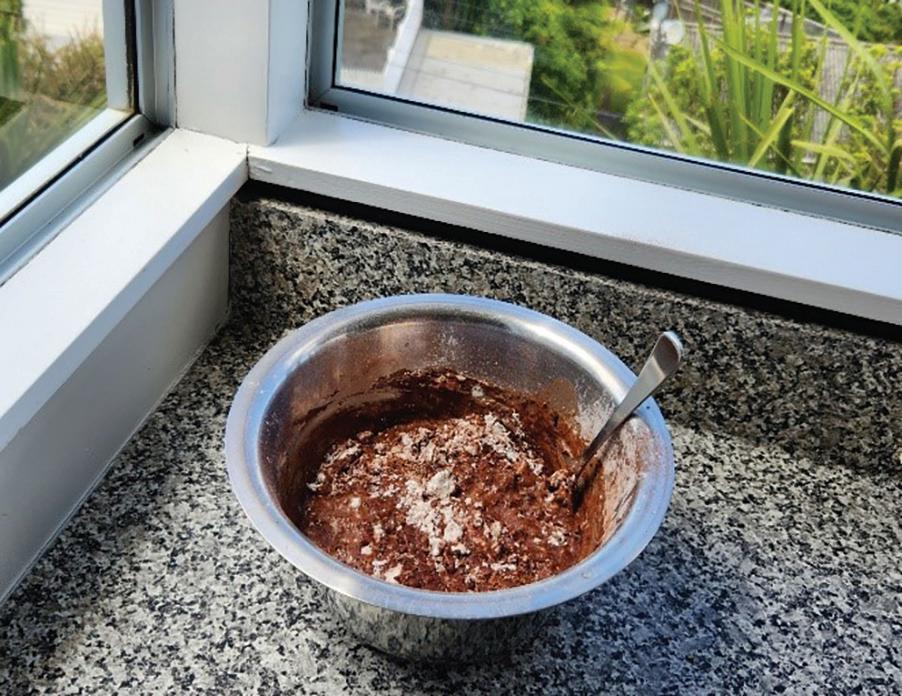
Gwangju News, January 2023 gwangjunewsgic.com 38 38 COMMUNITY
Mix Up: If you use a fork to mix up your ingredients, use a bowl made of stainless steel, glass, or porcelain so as to avoid scratching your baking tin.
Recipe
▲ If your knife or other testing device has soft and uncooked batter still stuck to it, it needs longer in the oven. If your knife or chopstick is clean, then the cake is completely cooked and ready to cool.
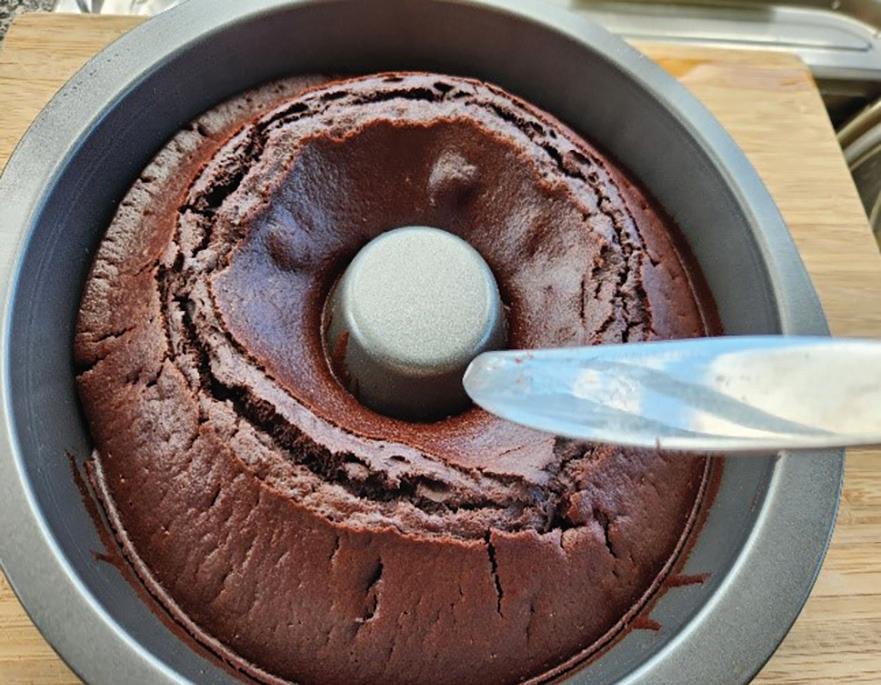
reaction. This recipe needs no milk, butter, nor even eggs. This is a huge bonus in terms of having no cholesterol and much reduced saturated fat, but most of all, even despite directly producing carbon dioxide in the baking, because of your not using milk and butter, the total greenhouse gas footprint (and also water pollution impact) of this single cake is much smaller than the pollution created by a cake the same size using butter, milk, and eggs.
b. The original recipe suggests you mix the ingredients within the very cake tin in which you will bake your cake. This shows just how easy it is to prepare this simple, reliable recipe. Mixing within the baking tin appeals to my sense of laziness, but most modern baking tins have non-stick surfaces, so if you use a fork to mix your ingredients, use a mixing bowl made of stainless steel, glass, or porcelain to avoid scratching the baking tin.
c. The earliest written version of a similar recipe was in 1960, within The I Hate to Cook Book by Peg Bracken. Bracken was an advertising copywriter who worked with Homer Groening, Matt Groening’s father. Matt created the TV show The Simpsons, featuring a father named Homer. Bracken said her book developed from talking with other professional women who “pooled their ignorance” in sharing easy-to-cook recipes and techniques. In her introduction to this chocolate cake, she wrote:
This is a famous recipe, I believe, but I haven’t the faintest idea who invented it. I saw it in a newspaper years ago, meant to clip it, didn’t, and finally bumped into the cake itself in the apartment of a friend of mine.
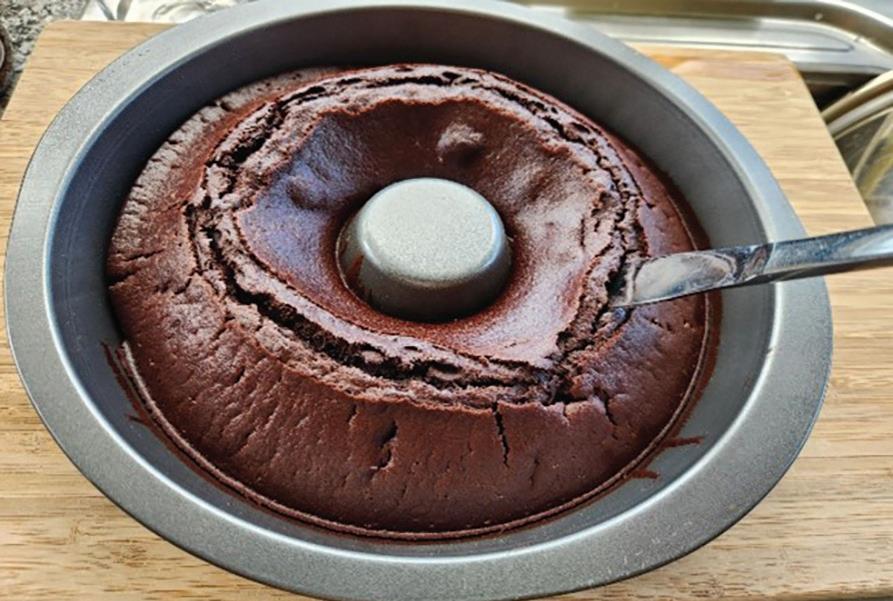
It was dark, rich, moist, and chocolatey, and she said it took no more than five minutes to mix it up. So, I tried it, and oddly enough, mine, too, was dark, rich, moist, and chocolatey. My own timing was five and a half minutes, but that includes hunting for the vinegar.
d. The name for that similar cake recipe is outdated. Pam Bracken uses the name “Cockeyed Chocolate Cake.” Regardless of who actually chose the name, the word cockeyed means “something that seems irregular or unusual but is actually quite natural,” just like a rooster that has eyes on both sides of its head, like most birds, fish, and mammals. The recipe is similarly unusual in that it is so simple yet delicious that it immediately proves eggs and dairy entirely unnecessary, and it achieves this by using a natural process to make the cake rise.
▲ The completed cake might crack on top. That is okay: It is still delicious, but if you want to make it look more uniform and somewhat professional, cover the top with icing or a thin sprinkle of icing sugar and crushed fruit.
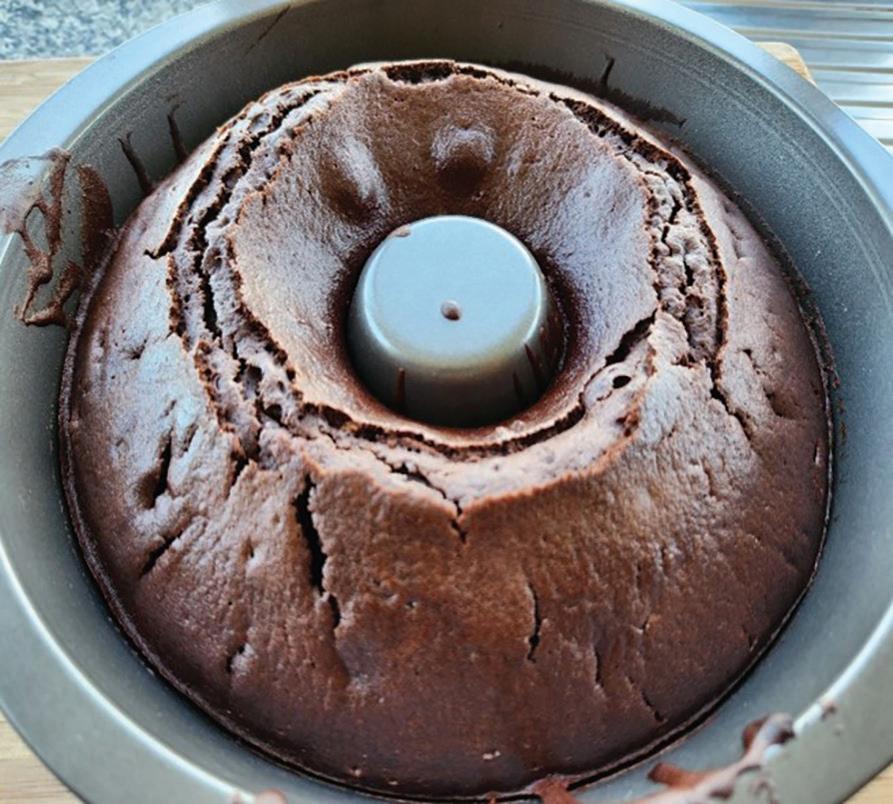
The Author
Julian Warmington taught for twenty years at the university level in South Korea, half of which he spent in Gwangju. He was the editor-in-chief of the Gwangju News twice, oversaw its development from a single-page leaflet newsletter to a full color magazine, and established Gwangju News Online.
 Photos courtesy of Julian Warmington.
Photos courtesy of Julian Warmington.
▲ Use a toothpick, chopstick, or knife to push into the center of the cake to test whether it is fully baked yet.
Tapped Out
By William Urbanski
When I was growing up in Canada, my family’s house had a well that would occasionally freeze or run out entirely. It would freeze because Canada gets buck-wild cold in the winter, and it would run out in the summer when certain “citiots” (that is, idiots from the city) would come up and take 20-minute showers in the middle of summer. Whatever the reason, the house’s water system always seemed to fail at the worst possible time, causing virtually all household activities to come to a halt.
While the disadvantages of relying on well water seem painfully obvious, growing up with one imbued me with a keen awareness of exactly how much water is being used at all times, since we quickly figured out that not having access to water made it basically impossible to live like normal human beings.
As you might have heard, “the well running dry” pretty much sums up the situation that Gwangju is facing right now. When the inevitable water restrictions come to pass, it will be an inconvenience
that will have us looking back fondly of the good old days of mere trucker strikes and Covid-19 lockdowns. It will also be a chance to examine, on a granular level, how we got into this mess in the first place.
AU REVOIR, RESERVOIR
While the reason for Gwangju’s water woes is purportedly due to global warming and weather anomalies, given Gwangju’s staggeringly high number of high-rise apartment buildings (that’s to say those with more than ten floors), it’s a small miracle that the city’s water infrastructure didn’t completely collapse years ago. To be fair, Gwangju isn’t the only city in the world that has an abundance of tall apartment buildings, but it’s also another city that just can’t seem to stop building them.
Large apartment buildings (and complexes) are often seen as the panacea to a lack of housing, but the problems they create are myriad. First of all, they’re expensive to build, the costs of which get passed on to the renters or buyers. They’re aesthetically pretty awful to look it. They also create
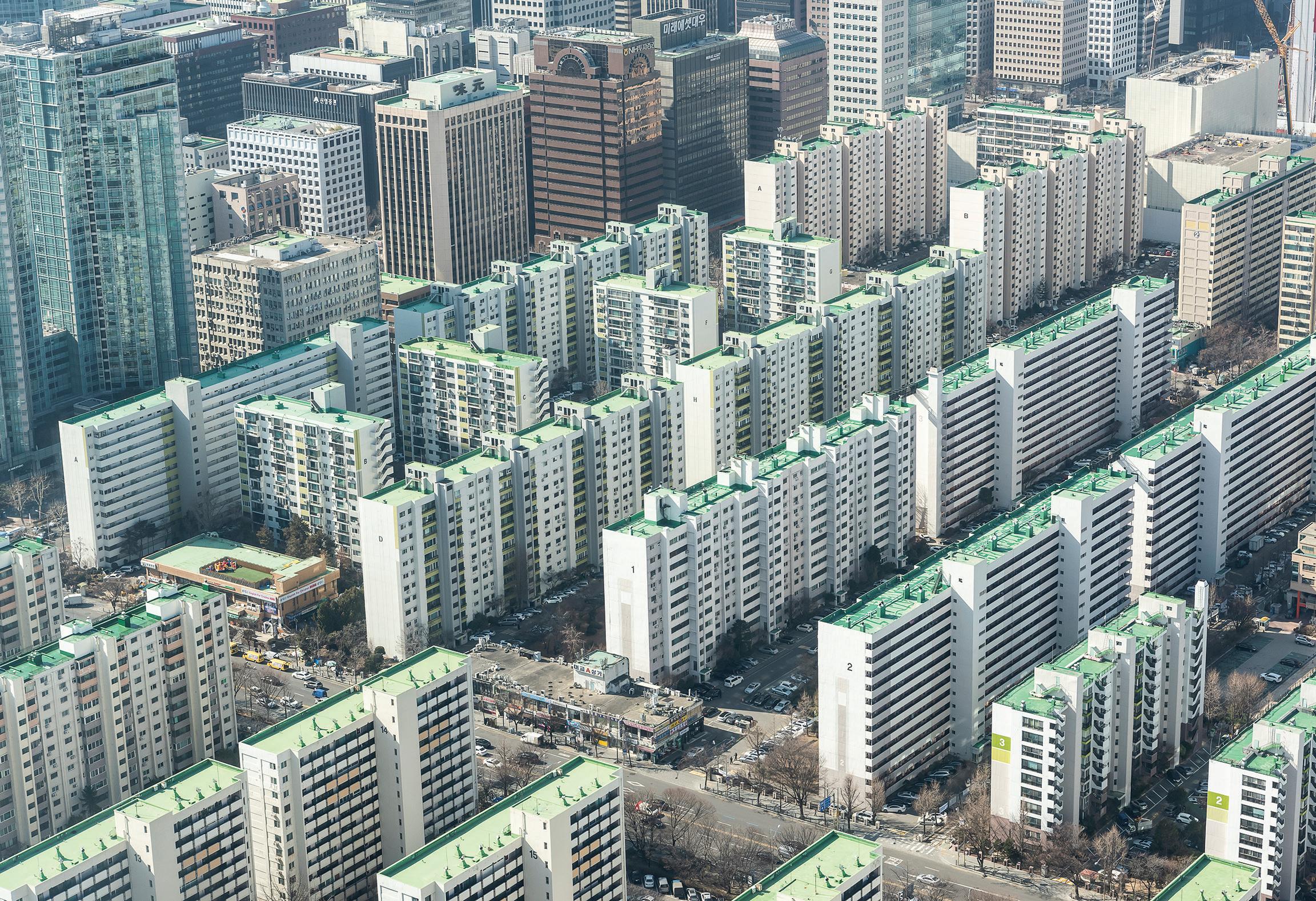
Gwangju News, January 2023 gwangjunewsgic.com 40 40 COMMUNITY
Opinion
areas of incredibly high population density that act as focal points of extreme traffic congestion, energy consumption and, you guessed it, water use. You can’t just jam-pack a complex of massive apartment towers somewhere and expect it to not negatively impact the water table.
BOXED IN
Besides the objective fact that cramming a bunch of people together increases resource use, what’s not so obvious is the way that apartment dwelling leads to an outlook on life that’s disconnected from pesky notions such as “nature” and “community.” To better understand this, let’s walk through an average day in the life of someone who lives in an apartment in Gwangju. The individual wakes up in a box-shaped room after spending the night on a box-shaped bed. She walks out into her square kitchen for breakfast, gets dressed, and steps in another box that takes her down to a big, rectangular underground parking garage where she gets into a metal box that whisks her away to an office building that, you guessed it, looks like one more giant box. All these boxes are all climate controlled and physically separated from the outdoors. Actually, it sounds not too bad, right?
to see the natural world as something we must be protected from at all costs. When it comes to water use, it’s really no surprise that the average person doesn’t worry much about how many liters they use per day because they are almost completely removed from how their water use connects with the bigger picture and the water cycle in general.
So, there isn’t much question that high-rise apartment living leads to isolation, detachment from the community, and also increased resource use. But there’s another factor: In case you haven’t noticed, apartments in Gwangju aren’t exactly cheap (even when they collapse mid-construction, cough, cough, I-Park, cough, cough), and someone who drops seven hundred grand on a 100-square-meter apartment isn’t going to worry about using an extra liter or ten of water. After all, he or she is a special, successful person who can use as much electricity, gas, and water as they like, thank you very much.
UNCHARTED WATERS
We should all strive to use as few resources as possible, but the problem with saying that the solution to Gwangju’s water woes is for each individual to reduce their water use is that it obfuscates the fact that the water shortage was caused not by a bunch of people leaving the faucet on while brushing their teeth, but by unbalanced city planning, policy failure, and the lack of community created by living in isolated boxes. I’ve grown to hate the words “sustainable” and “unsustainable,” so let’s just say that the current high-rise apartment situation is untenable, and continuing to build these things, nudging people towards adopting a resource-intensive, isolated lifestyle will only exacerbate the water problem.
Well here’s the problem: During the average day, what a person like this doesn’t do is have meaningful interactions with her neighbors or connect with the natural environment. Not only is there more or less complete isolation from people who live meters away, but this lifestyle slowly conditions a person
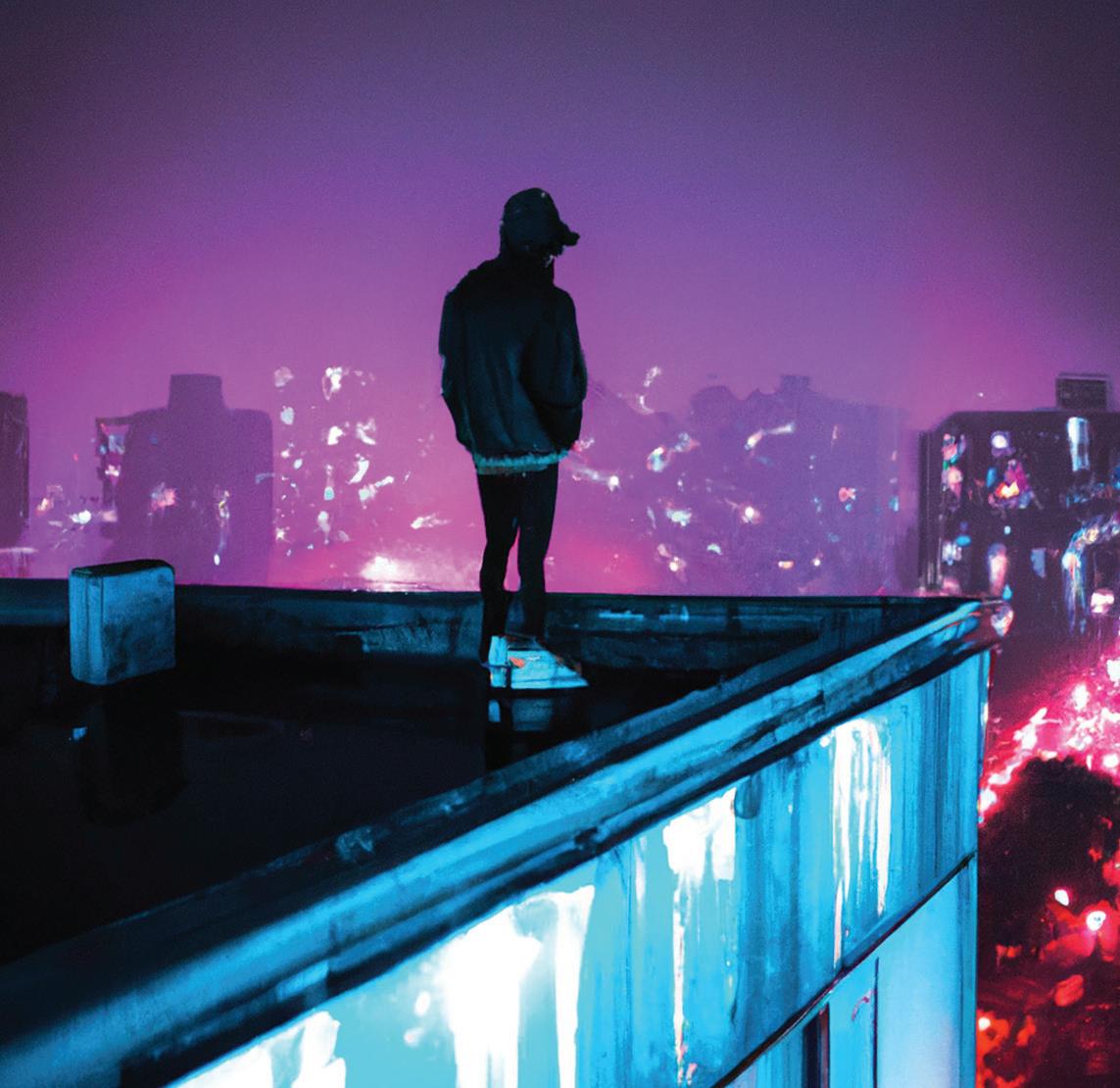
It’s looking like pretty soon the people of Gwangju are going to have to figure out how to get by with a lot less water. The long-term solution to the city’s hydro headaches may involve drilling deeper underground or building a massive pipeline. But on an individual level, probably the best thing to be done is to take a walk in the forest and stop to chat with your neighbors on the way there.
The Author
William Urbanski is the managing editor of the Gwangju News. He is married and can use chopsticks. Instagram: @will_il_gatto
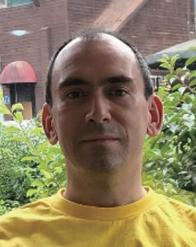
gwangjunewsgic.com Gwangju News, January 2023 41
Sharing Is Caring
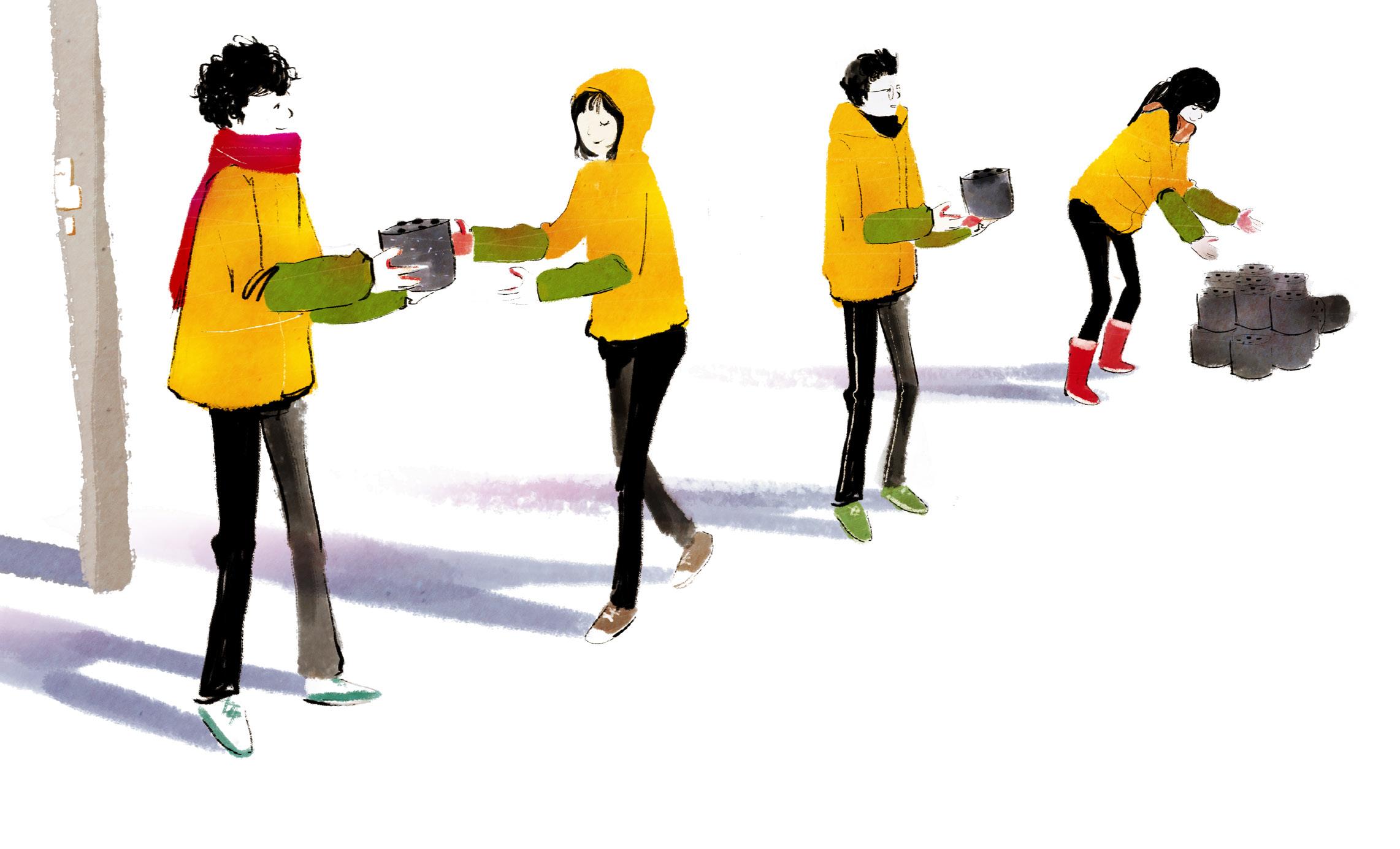 By Park Nahm-shik
By Park Nahm-shik
Sharing is caring” seems to make an apt slogan for the Gwangju International Center (GIC). What do you say? It appears to fit the Center's intercultural activism particularly well. It also happens to neatly line up with the spirit of Noel, which is drawing near. With the holy season almost upon us, it is high time we paid homage to the Christmas message of peace on earth and good will to all.
All these ideals of Christmas are closely intertwined, each with the other. By the way, we are reminded here of the Biblical message that it is more blessed to give than to receive. The message is validated first and foremost by the passion of Christ being infinitely more blessed than the gift of eternal life us mere mortals are rewarded with in return for faith in the Son of Man.
Going back to the GIC as the epitome of “sharing is caring,” the Center is giving its all for an ever more enhanced intercultural climate in and around Gwangju. Truth to tell, Center Director Shin Gyonggu may very well be dubbed the personification of maximum intercultural service to Gwangju and its vicinities.
“Sharing is caring” is probably the keystone in the architecture of the precept “Love thy neighbor as thyself.” It may indeed be the beacon-cumcornerstone for peace on earth and good will all around. Coupled with generosity, charity will transform our surroundings into a paradise on earth. Thus, “sharing is caring” is a fitting call to action for humanitarian volunteers of all stripes.
True to this “reveille,” all charity-rooted projects, those of the GIC included, must always be ready, able, and willing to share their all with whoever is most in need. The noblest thing the haves can do is to selflessly share what they can afford to and even more with the have-nots around them. This sharing should not be limited to material stuff like food, shelter, and clothing. It should also comprise non-material things like empathy, fellowship, companionship, etc.
Needless to say, there is no reason why sharing should be a transient affair. It could and should be turned into a year-round fixture kept alive and well all the while. At this point, should we not all pledge (and rededicate) ourselves to sharing as a road to a global community of brotherhood everywhere?
Just as I was doing pre-Christmas preparations this past December, I was dreaming of a White Christmas and a world of Good Samaritans every Yuletide down the road. Perhaps I am being a bit naive here, but I do believe this: If you can dream it, you can do it. Dreams come with the magic of alchemizing impossibles into possibles.
Park Nahm-shik has a BA in English from Chonnam National University, an MA in linguistics from the University of Hawaii, and a PhD in applied linguistics from Georgetown University. He is now a professor emeritus after a long and illustrious career at Seoul National University.

Gwangju News, January 2023 gwangjunewsgic.com
The Author
COMMUNITY “
42
A Can of Coke
 By Ellie Goodwin
By Ellie Goodwin
You have arrived fifteen minutes early. Of course, you did. Actually, when you think about it, you actually arrived thirty-five minutes early, but you checked your watch, both panicked and exasperated by your eagerness, and then took to the streets, walking around in no particular direction. You took a call from your mother, a small gesture that you would not have usually done, but there is time to kill and not a lot to fill it with. You talk about nothing in particular. She updates you about the running club, how Siobhan has started to try and take control, not that anyone had asked for it, not that anyone had died and made her leader and, of course, Patrick has taken umbrage with the whole thing, and there is now an indescribable tension in a place that used to be home to such a nice little group of friends whose only mutual interest was a short jog followed by a cup of tea on a Sunday morning. You make the obligatory noises that imply you are listening and that you care but, of course, you do not.
As you wonder how many minutes have passed and how many are left until you are due to meet,
the one conversation that you do not want to crop up at this particular time does. Of course, it does. Your mother bulldozes through your interruptions of ‘maybe you should bring this up with him,’ not that it took much effort on her part. They were pathetically feeble interruptions after all. The straw house of one of those idiotic pigs trying its hand against the might of the big bad wolf. You half-listen to her when she tells you about the new woman who is easily ten years younger than your father and without a thing between her ears, how utterly mortifying it was to hear that your father had tried his hand at ice skating and made a complete fool of himself, not that he ever went ice skating with her in all the years they were married or took the slightest bit of interest in anything that she liked.
You make your excuses, but sensing your desire to hang up, her clutches tighten so hard that you can almost feel her nails dig into your skin. More minutes of complaining about your father, grateful that he was some other woman’s problem now, that she was living her best life, that she was now her best self, that she could not remember a time when she was
gwangjunewsgic.com Gwangju News, January 2023 43 CULTURE & ARTS
Gwangju Writes
happier. And you wonder how true that is. Because surely anyone who is happy does not feel the need to remind everyone of it, be it during a phone call or an Instagram post, which your mother incessantly posts on nowadays. You count your blessings when she asks what you are up to. You answer, throat hoarse from being out of use for so long.
‘I’m meeting someone for a drink.’
‘Someone, who’s someone?’
‘Someone–’
‘Like, a date?’ Words spoken as though each one was a bite into a lemon.
‘Well, yeah, a date.’
‘How’s Katie doing? I really liked her.’
You feel that punch, the kind when someone knows that weakness and jabs, snatching and twisting it. You know that everyone experiences this at some point, so why do you feel so isolated when the feeling has been shared or will be shared by all seven billion inhabitants on this floating rock?
‘I haven’t spoken to Katie since we broke up.’ A disregard with the same dismissiveness as a hand batting away a fly.
‘I hear she’s finished her master’s in biomedicine, not some Mickey Mouse master’s that you see sprouting out all over the place nowadays. That girl’s going places, she’s got her head screwed on right. Longterm plan, none of this wishy washy, unsustainable I’m-living-in-the-moment rubbish. How’s work?’
The sudden abruptness in her tone is enough to give you whiplash.
‘Fine.’
‘Still not looking for any other work? Just staying put?’
Staying put. It makes you feel like stagnant water.
The type that starts to grow green stuff on top and develop a pungent and immovable eggy stench after a time, the type where, no matter how many times the pond is drained and money is spent on recleaning, the result would be the same. Still pungent.
‘I like my job, I like –’
But your mother will not get to hear what you like. She cuts across you not dissimilarly to a lumberjack chopping wood, and you get splintered with her tirade about how you should be taking a leaf out of Katie’s book, how much of a good influence she was on you, how ambitious and – what exactly did happen that made you two break up – and are you sure you have done everything you can to get her back, because people can change if they truly want to, they just need to put the effort in, and had you thought about that at all? Questions are thrown, but you are given no time to get to the base, let alone bat. Questions without space for answers.
‘I have to go now.’
It is true. You are due to be at the bar in five minutes. You do not give your mother time to reply. Merely hang up, and switch on airplane mode. You swim in your head, wave after wave knocking you in the midriff. Not enough to unbalance you, it is never forceful enough for that. No, it is just enough to slowly erode you, to make you ache that little bit more, to make bodily movement that little more labored and weighted.
You get to the bar and know instinctively that you are the first to arrive. You take a table for two and seat yourself unceremoniously in the chair. Around you, people talk and laugh. Pint glasses meet in the middle with a declaration of ‘Cheers.’ There are groups at some tables and two at others, and you wonder what all these people are to one another. Relationships? Friends? Have they known each other long or are you seeing these bonds in their infancy? You feel intrusive. That you, your unwhole self, should not be here, that your presence is tainting the wonderfully glorious moments that are being made and shared in front of your very eyes.
Gwangju News, January 2023 gwangjunewsgic.com 44
You have to squeeze your eyes tight to rid yourself of this thinking as best you can. It turns into less of a thorough clean and more of a sweep under the rug thing. A temporary fix.
And then you think about Katie, and all the other people in the world who have a Katie, and if you are Katie’s Katie. Of course, now would be the time you think about her. It has been years, and she is still your favorite pastime. You are unsure how similar the Katie who resides in your head is to the real one, how much is accurate and how much is conjured fantasy on your part. Your rational side tells you its the latter, but it is still sometimes hard to hear it over the never-ceasing rumble of noises that are the never ending anxieties and insecurities. Katie was the one whom you had loved the most. Of course, she was. The one you loved the most would be the one to give you the most pain, too. Television shows, songs, books, photographs; they still tug at the sleeves of old memories. Things that were heard, seen, and read by so many but at the same time, exclusively yours. You had been the best version of yourself with her, you know that. And yet, she had walked. Someone had turned down the best of you and what you had. How do you move on after that? Chewing gum on the sole of a shoe. You can never shift all of it. There will always be some left in the grooves or a lingering stick. And now would be the time that your mother would bring her up, and now would be the time that Katie would be that all-consuming thought, and now would be the time that your mouth fills with sawdust, that the exit is unlocatable, that the nerves have now turned to panic, that you forget all the questions you had conjured for this new person whose name you have now forgotten, whose face you cannot place.
You catch the last part of what he says.
‘Sorry – what?’
‘Can I get you a drink?’
You look at the still vacant chair opposite you. ‘A Coke, please.’
Why bars give you an empty glass filled with ice when the temperature is now in the singles is a logic that you cannot fathom. Like why you insist on tapping the aluminium lid of the can with the tip of your nail before drinking.
‘It stops the Coke from fizzing over everywhere.’
That is what people say, how the superstition went. And when you tap, a thought occurs. It comes to you gently, like that reassuring nudge with an elbow or a small tilt of the head in acknowledgement. You could have left. You could have made any excuse, but you stayed and you bought yourself a drink. And you are still here, still tapping that aluminium lid, and still waiting. You could leave now, leave that can of coke untouched, throw some cash onto the table and walk straight out. But you are not going to do that, and you know that you will not. You will keep waiting, keep tapping. And you smile. Because that place that you so desperately wanted to be in is where you are now, and you had not realised all along. And that pastime thinking has done precisely that; it has passed. Katie’s there, but she is more of a dim flicker than a supernova now. Charlotte. That is the name of the girl you are about to meet. You have messaged a lot. You have sent a lol reply because she had actually made you laugh. She is interesting, she is funny. She seems nice. And you stop tapping that aluminium lid because maybe the fizz will not blow up in your face when you open it. Or maybe it will, but you will cross that bridge when you get to it. And you will clean yourself up if it does happen. In your peripheral vision, you see someone approach your table and you can finally put a face to the profile picture.
End.
The Author
English teacher by trade and keen traveler the rest of the time, Ellie Goodwin has been to 36 different countries, lived in China for over three years, and has lived in Gwangju for ten months. In her free time, she enjoys (you guessed it) traveling, hiking, reading, and the occasional soju. Instagram: @elliee_goodwin

gwangjunewsgic.com Gwangju News, January 2023 45
The Lincoln Highway
 By Amor Towles
Reviewed by Michael Attard
By Amor Towles
Reviewed by Michael Attard
Based upon the characters, this historical fiction might be seen as a coming-of-age story. But the many themes, including social pragmaticism, hopeful dreams, defending ourselves, getting a fresh start, betrayal, virtue, guilt, indignation, atonement, and forgiveness go well beyond the transition of youth into adulthood. Over almost 600 pages, all of the above come into play and are intermingled. In spite of the book’s length and the tendency of the author, Amor Towles, to ramble on about certain characters or events, the strong themes and the struggles of the well-developed characters keep the reader in the moment, wanting to know more. The language is simple and the conversations brisk and believable, making the lengthy read not nearly as daunting as one might suspect.
The story begins with the protagonist, 18-year-old Emmett, being returned home by the warden after a stay in a reform school. A year and a half earlier, having lost his temper, the subsequent action had unforeseen repercussions, for which Emmett was accountable. Having served time in an institution, legally, he owed nothing to society, but life is not as simple as that. To add insult to injury, his father died of cancer before his release and the bank foreclosed on the farm. All Emmett has is his car. His mother had left the family years before.
Nevertheless, Emmett has a plan to leave his small town in Nebraska, with his precocious but loveable
eight-year-old brother Billy. Following the Lincoln Highway will take them to California. This was where their mother had gone, and Billy had no doubt that they could find her. Chance then plays a wild card when two fellow inmates literally pop up after having hid and hitched a ride in the warden’s car trunk. Thus, the escapade begins.
We meet Duchess, now an escaped fugitive, who despite his lack of education has a charm and persuasive gift of gab, which often seem to cross the border into bullying. He also has a knack for converting what belongs to others into a favor for himself. Woolly, the second of the two stowaways, could not be more different. He comes from a long line of money and is sensitive, meek, and polite. It is never stated clearly, but his obsessive attention to detail, rash decision making, and oblivious perception of many societal norms lead me to conclude that he is somewhat autistic. Woolly has medicine that he takes, and the trustee of his estate has had him declared “temperamentally unfit.”
Duchess has hatched a plan to rescue Woolly’s rightful trust of $150,000 from the family safe out in the sprawling, Adirondack summer estate. Emmett wants nothing to do with this, but with the unique bond of friendship that joins them, he agrees to drive Duchess and Woolly to the bus station in Omaha. Well, they never get there, and Emmett and Billy are stranded. Emmett wants his car back, so he and Billy
Gwangju News, January 2023 gwangjunewsgic.com 46 CULTURE & ARTS
Book Review
have an adventure traveling in an empty box car to New York City. The hope is to find Duchess at his father’s place.
Throughout the story, Emmett does have a good understanding of Duchess and does not hold a grudge against him. As Emmett explains to young Billy, “Duchess is full of energy and enthusiasm and good intentions, too. But sometimes, his energy and enthusiasm get in the way of his good intentions, and when that happens, the consequences often fall on someone else.”
Duchess hijacks Emmett’s and Billy’s plans and the narrative. He clearly recalls Sister Agnes from his orphanage teach that atonement and forgiveness can release a person from the chains of guilt and indignation, respectively. But rather, Duchess thinks in terms of a fresh start, cleaning of the slate, paying for what you owe, and collecting what you are due. In the end, for Duchess, this boils down to revenge.
As the boys’ adventure heads in what appears to be the wrong direction, the one stabilizing element –surprisingly – is eight-year-old Billy. When he and Emmett hit the road, he did not carry much with him, but he did bring his favorite book, A Compendium of Heroes, Adventurers, and Other Intrepid Travellers. Billy understands that all the classical heroes have their flaws, trials, and tribulations. He never loses the hope that he and Emmett will make it to California and find their mother. While the three older boys appear confused or misdirected, it is little Billy who holds fast to the beacon of truth.
Emmett, by now well caught up in the swirling events set in motion by Duchess, comes to terms with his past condemnation and judgement of others. He feels shame but begins a forgiveness of self. As he tries to handle and get out of the mess created by Duchess, he understands that virtue alone is not enough to create one’s own unique life. Grit, integrity, and determination are necessary ingredients.
The story does not end well for Woolly. “He hoped for a world where everybody’s life was like a piece of a jigsaw puzzle. Then no one person’s life would ever be an inconvenience to anyone else’s. It would just fit snugly in its very own, specially designed spot.”
Emmett knew that choices needed to be made. And when he was free of Duchess, he could have just kept driving. But Emmett knew that Duchess was in trouble, and one more time he would try to help. He returned to Woolly’s family estate in the Adirondacks. Duchess and Emmett were of different minds. There would be no peace between them.
The Reviewer

Michael Attard is a Canadian who has lived in Gwangju since 2004. Though officially retired, he still teaches a few private English classes. He enjoys reading all kinds of books and writes for fun. When the weather is nice, you may find him on a hiking trail.

gwangjunewsgic.com Gwangju News, January 2023 47
22 for ‘22
By Daniel J. Springer
As 2023 dawns, Danno takes a look back at some of his favorite albums of the past year with the aim to shout out something for everyone.
Happy New Year, fair readers and listeners! The past year has been another very strong one in new music from both the old pros and the young upstarts, but you know, there’s just too much of it out there. Thankfully for you, I do this full-time so you don’t have to listen to the latest amateur outfit’s “epic” debut (I’d have added another word to that description most of the time), or that old band you love making an incredible return to form with their 348th career LP (which sucked, let’s face it… we still love ’em but c’mon).
Now, realizing my own biases, imperfections, and general lack of focus on the bright, shiny objects that everyone else is melting over, I’ve done one big thing for this year’s album round-up: no rankings.
I guess it’s natural to rank albums given the charts and all of that jazz, but, just like the progression of hip-hop from the golden age to the metronomic present, it’s become rather drab and repetitive as far as the arrangement no matter how well you throw down your bars in between.
Put simply, listicles are generally rather large exercises in futile mental masturbation.
Also, who the hell is anyone to tell you what the worth of any art is, really? Yeah, sure, I do this fulltime, but if anything should surely be inculcated by the general public with the events of the past half decade or so swirling endlessly in our masked faces, be it politics or health or sports or anything else, be well read, but bring your salt to the reading table.
Thus, in the interest of breaking the mold and letting
you make up your own mind, no rankings on this list for 2022’s best albums, and there’s plenty beyond my favorite 22 to sink your teeth into as well to round out a decent top 50.
As stated, it was a strong year, and I’m sure there are artists on this list that you haven’t checked out that are well deserving, from young upstarts making debuts to veteran acts finally making the breakthrough to the pop forces of nature that just won’t let us get away even if we’re not that into ’em. The main point here is that the list represents a diversity of sounds and gives you a bit of an idea as to what they are and why I personally thought they were fire.
With that noted, let’s begin the fun, and may 2023 bring us more good funk to get us out of this bad funk. All the best to all of you.
ADEEM THE ARTIST – WHITE TRASH REVELRY (Four Quarters Records)
You might find it weird to be starting off in the country realm, and trust me I find this locale a challenging starting point, but the alphabet cannot be argued with sans any rankings. And with my self-own trap properly laid, let’s step into it, although if I feel uncomfortable. Adeem the Artist surely knows the feeling, as the country artist is also non-binary and from the South. Thus, it is a wonder that this brilliant singer-songwriter is still breathing, let alone making an incredibly accomplished sophomore album that is undoubtedly one of the best albums of the year in any genre. The album itself is a statement to, and of, the deepest red of America

Gwangju News, January 2023 gwangjunewsgic.com 48 CULTURE & ARTS
in the South. While one might expect them to be deeply despondent and derisory of where they’re from, Adeem casts their outlook based squarely in an empathic worldview, which makes the songs exceedingly genuine in their clarity, resulting in an insightful, cutting record.

ALVVAYS – BLUE REV (Polyvinyl/Transgressive)
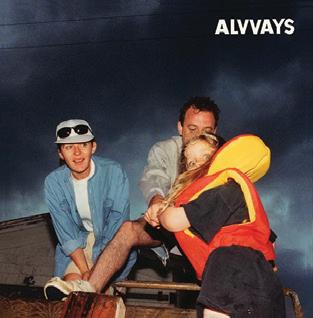
We go through so many tiny moments in life that sometimes the happenstances that emerge from stuff that one can barely remember the very next day often beggar belief. This is precisely the microscopic focus of this Toronto band’s third career album.
However, the zoom out from the momentitos in life grows into an album that creates a cinematic perspective for the listener that feels as real as it was to the protagonists directly involved. Blue Rev calls one back to moments of emotions and the little things in life that feel like yesterday even though you’re having trouble recalling what you had for breakfast. The songs and arrangements on this record are that personal, even though it’s only your first listen.
BIG THIEF – DRAGON NEW WARM MOUNTAIN I BELIEVE IN YOU (4AD)
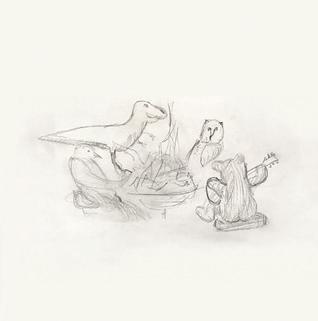
After an absolutely stellar 2019 with two excellent albums going everywhere to mass and critical acclaim, it felt like the sky was the limit for this veteran indie outfit led by the generational songwriting talents of Adrian Lenker. While the pandemic put a bit of a damper on the band’s rise, it also maybe put a hole in the collective memory of veteran (read: jaded) music fans out there. That is, the double album can be actually a great thing.
Typically, 2xLPs have either way too much filler, tracks that are underdeveloped, or more typically, a fatally annoying combination of both. Not so with this gem, which feels like a long road trip across the vast expanses of the American continent, giving us the highs of songs like “Simulation Swarm,” and the Biblical lamentations put into acoustic folk-cumVedic chant format of “Sparrow.” This is a band that cannot be stopped, and if rankings were a must, this album might be at the very top.
BLACK COUNTRY, NEW ROAD – ANTS FROM UP THERE (Ninja Tune)
This record and its release were so glorious and catastrophic that it’s almost painful to write about. As far as the good on this record, the slow burn within is so heartachingly quality that it renders the heart to ribbons.
However, just four days prior to the release of Ants from up There, lead singer and guitarist Isaac Wood, citing mental health issues, just left the band. Admirably, the band have decided to soldier on, but will it be the same? Time will tell, but most would doubt it. Maybe that makes this album even better in the end, and the emotive trek required to take it in that much more satisfying.
BOBBY OROZA – GET ON THE OTHERSIDE (Big Crown Records)

One of the best new arrivals in the vintage funk and soul movement of the past decade has been Finnish crooner Bobby Oroza, and on his sophomore album, he and backing band Cold Diamond and Mink encourage you to stop putting your feet on the ground and join them in space.
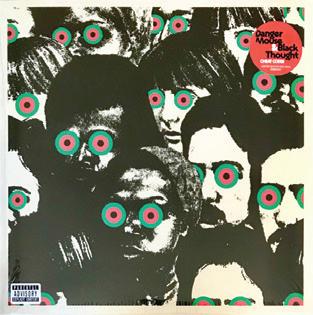
The sublime gravity-free float to be enjoyed on this record is the standout aspect, with songs like “I Got Love,” “Sweet Agony,” and “Loving Body” sending you off to Bobby’s mystical realm in the galaxy’s outer reaches. If these tunes and this album are to be representative of what’s to be found on the “otherside,” it’s time to go.
DANGER MOUSE & BLACK THOUGHT –CHEAT CODES (BMG)
This is an album that hip-hop fans have been dreaming about for literal decades, as super producer Danger Mouse and The Roots’ lead man have been in collab on a slew of projects over the years. Enter this vintage bomber of an album, which features the likes of Mercury Prize-winner Michael Kiwanuka and the dearly departed MF Doom within, amongst a variety of other heavy hitters.
gwangjunewsgic.com Gwangju News, January 2023 49
While Black Thought says this is not part of the Streams of Thought series, it probably goes down that way to most listeners, with a stunningly simple bare bones series of arrangements showcasing Thought’s devastating lyricism that still cuts like a scalpel wielded by an accomplished surgeon.
DANIELLE PONDER – SOME OF US ARE BRAVE (Future Classic)
With the release of the first couple of teaser singles to this incredibly soulful album, a lot of people were asking, who is that? Well, the answer is obvious as the name is on the album, but that doesn’t tell you this debutant worked for years as a public defender in upstate New York before biting the bullet and moving down south to the metropolis to try her hand full-time in music.
The result is this stunning album that makes clear we’re dealing with an amazing new vocal talent on the scene and a person who is not about to forget their working class and activist roots.
GHOST FUNK ORCHESTRA – A NEW KIND OF LOVE (Colemine/Karma Chief )
After 2020’s dynamic An Ode to Escapism, it was an interesting thought experiment for fans of the band to wonder where main man Seth Applebaum would take his ever-evolving phantasmic vintage take on funk and soul next. The answer with A New Kind of Love is wherever he wants to take it, and both his incredibly tasteful albums and improving productions damn well give him that right. In an exclusive interview on The Drop, Applebaum discussed getting over the need for being vintage sounding just for the sake of it and letting the music speak for itself.
The culmination of that mindset is an incredibly expansive cinematic funk and soul blast, with the most poignant moments punched by the everemotive female vocals and blares of brass that are so in your area you might just get lost forever.
HUNJIYA – KHAMAI (Ada Korea)
Kim Hyun-ji has had a well-traveled life that has
seemingly come full circle, with the Seoul-born, US-raised singer-songwriter leaving Miami and returning to the capital of her birth. Khamai is Hunjiya’s first release since 2020 and sees the singer going into her more acoustic-based sound that to me really lets her incredible voice stand out a la 2017’s Lineage EP.

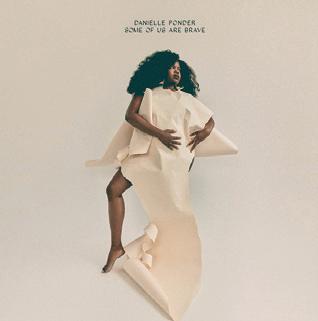
The album’s Greek title seems to be a play on communication and the lack thereof, reflecting Hunjiya’s move back to Seoul in the middle of the pandemic. Already caught “between worlds” on the language and cultural level, the struggle to effectively have people understand is palpable throughout this record, which feels like a defiant, soulful cry in the night for everyone feeling a similar pain in their daily interactions.
IBIBIO SOUND MACHINE – ELECTRICITY (Merge)
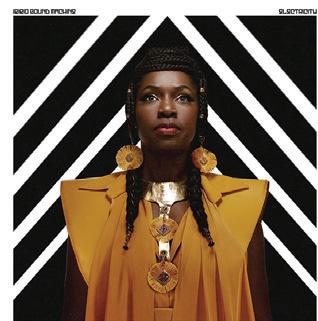
This London-based band fronted by lead singer Eno Williams is hard to pin down, although most put them into some lazy “dance music” or “EDM” (blech) category. More than anything, this band of West African descendants is the perfect encapsulation of Afro-futurism here in 2022. Being from the lands where some of the first percussive instruments were invented, this trip produced by the Hot Chip duo speaks to the band’s ability to communicate through music across spacetime.
Electricity speaks the languages of highlife, afrobeat, house music, synth pop, and Hausa all at once, with an accessibility to the listener that is crystal clear and infectiously fun.
KENDRICK LAMAR – MR. MORALE & THE BIG STEPPERS (Top Dawg/Aftermath/Interscope)

This album is exceedingly complex to digest, which to the experienced listener is usually the mark of quality, but it just takes time and a few listens, which honestly most people can’t hang with. Maybe it’s the jarring manner in which this record flows forth, and its complicated

Gwangju News, January 2023 gwangjunewsgic.com 50
subject matter.
But no, it’s not the contradictions or the bumpy ride; what makes this record great is both its realism and unresolved hopelessness. For those looking for blessing and absolution, there is none to be found here, and Lamar’s honesty in the morose blackness of harming those we love with zero resolution only results in a big shrug and an even bigger musical statement.
KING GIZZARD & THE LIZARD WIZARD – ICE, DEATH, PLANETS, LUNGS, MUSHROOMS, AND LAVA (KGLW)

Really, what can you say about this Aussie group that just continues to change what’s possible for one band to put out as far as quality and volume? Four albums in 2022, and pointing it out with jaw agape, you’d probably get a shrug from the veteran outfit’s members, as they’re too effing busy putting out the next five.
This is one of three albums King Gizz put out in October alone, but it is surely the best of the latest triplets birthed by the cosmic, multi-headed creature. The songs therein represent all seven modes of the major scale, with the titles being a mnemonic device for the mode therein, and all of it was recorded in seven-days’ time with each member jamming for 45 minutes, switching instruments, and then continuing on. Seriously, how deep does this go? Nobody knows, but as usual, it’s an absolute epic from King Gizzard that’s as surprising as it is insanely adept in its craftsmanship.

KOKOROKO – COULD WE BE MORE (Brownswood Recordings)
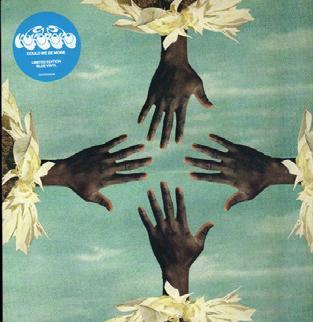
This is a veteran West African band based in London that have been signed to Gilles Peterson’s Brownswood imprint for a while now, but this would be their fulllength debut. For fans of the band, it’s rather amazing to ruminate on, as their previous EPs generated so many streams and so much hype that it just felt like it was all from a couple of very good albums.
The sound to be found on this record from these disciples of Tony Allen is exuberant and healing at the same time, with both emotional states being executed in understated but technically brilliant fashion, just like their patron saint and the godfather of afrobeat would’ve conducted it his damn self. Definitely a slept-on masterpiece for the jazz heads here in 2022.
MARXIST LOVE DISCO ENSEMBLE – MLDE (Mr. Bongo)

Like UK-based (allegedly) mystery soul collective Sault, this group out of Italy was a bit of a valenced mystery on first release that might make the listener feel like their revolutionary romanticism only exists inside of their own socialist dream states. But no, the hope still lives and the dream never dies, as this group based out of Bologna that’s led by Paolo Volkov dropped the mysterious aspect along with this incredible album of Italo disco-influenced chuggers earlier this year.
But this album is far more future than the above describes, as the subtleties in the margins of influence are what really add distinction to this record’s sound. With Volkov listing Scottish pop darlings Orange Juice, Armenian pop icon Hamlet Minassian, and Ian Dury collaborator Chaz Jankel as those lighting the way, it does a lot to explain what makes this record a true original and a hidden red ruby in the morass.
MONSTER RALLY – BOTANICA DREAM (Golden Robot)
No, as pointed out when Ted Feighan appeared on The Drop, this is not Cleveland’s latest thrash metal group. Instead, it is a veteran vintage lo-fi producer and accomplished visual artist who year after year does things so simple yet unique in the ever-metastasizing multiverse of music that it almost beggars belief.
Monster Rally’s blend of downtempo and lo-fi beats along with vintage exotica and tropicalia influences, amongst other apparitions in the music world, make for a free trip to Mystery Island every time you hit
gwangjunewsgic.com Gwangju News, January 2023 51
“Play.” Botanica Dream sees this taken to an arguable career best in a discography from one of the most consistently outstanding contributors to this style.
NOGYMX – EIEN’S FABLE (Independent)
It’s kind of incredible the amount of good independent music that continues to flow out of Cheongju, but chief amongst them is this understated Irishman out of Galway who’s called Korea home for the past eight years. Jimmy Dunne in his lo-fi guise goes by the name of Nogymx (no gimmicks) and has created a devoted fan base with his bifurcated contributions to which you chill, study, and relax.
Eien’s Fable represents the artist’s Asian-influenced audio side and is Dunne’s career fifth overall. Creating a fantasy realm through the music therein, this is the follow-up to the artist’s previous Ancient Forests and racked up an absolutely mind-boggling 1.5 million streams on Spotify alone in the first weekend of release. Drift with this one; you’ll be better off for it.
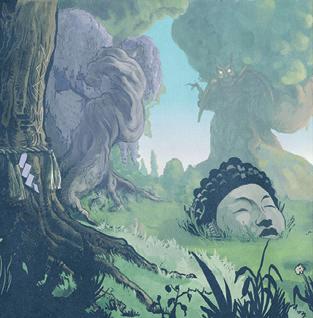
SAY SHE SHE – PRISM (Colemine Records)
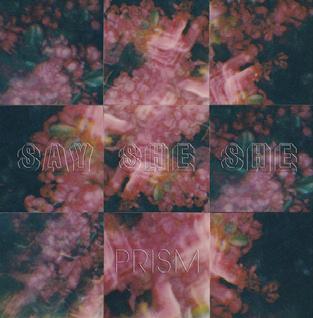
This is a septet ensemble out of Brooklyn that’s a nod to the genius of the sounds of The Chic Organization of Nile Rogers and company back in the day. Led by the female vocalist trio of Piya Malik, Nya Gazelle Brown, and Sabrina Mileo Cunningham, the vocal harmonies on this record are remarkable to say the very least.
Representing the diversity of backgrounds amongst the singers, one can find a lot of influences on this record melding together into an exceedingly consistent whole, with the most notable being “Forget Me Not,” which melds an infectious, funky hook to a hybrid Eastern-influenced vocal delivery. The sky is literally the limit for this experienced crew with this lovely, expansive debut.
SAY SUE ME – THE LAST THING LEFT (Damnably)


So, let’s call it here to start for all the good bands
on the indie scene here in Korea.
If you’re not candy-toned K-pop that can be added like a cheap cellphone tchotchke to their advertiser’s dream catalogue of predictability, you have little hope to get local exposure even though you totally deserve it.
Enter UK-based Damnably, who have breathed life into some amazing Korean, Japanese, and Southeast Asian rock bands in recent times like Daegu’s Drinking Boys and Girls Choir, Otoboke Beaver, and indie darlings from Busan Say Sue Me. On Choi Su-mi (get it?) and company’s latest record The Last Thing Left, the band has truly entered a mature realm, with indie rock jumpers that longer-term fans will love accented with some truly new and expansive soundscapes. Currently Korea’s best band and only getting better, do go catch them live because the kids from Busan are truly coming into their own.
SZA – SOS (Top Dawg/RCA)
There are times when your habit of turning in your homework at the last minute pays off, and this expansive gem of an album would apply directly to this article. SOS, which just dropped prior to deadline on December 9, is an expansive, 23-song masterpiece that sees the singer at her very best in a stylistically diverse but always brutally honest buffet of mixed emotions and complexities in life and relationships.
An artist that hates the typical pop press pigeonhole of black = R&B, SZA plans to shoot the videos to this album and “disappear,” but how realistic is that with a public that simply can’t get enough of this record? One of the best albums of the year, and one that will hopefully round out the edges of the media’s boxy and clumsy musical perceptions of people, especially women, of color.
THE BETHS – EXPERT IN A DYING FIELD (Carpark Records)
This Kiwi band has been on the rise since their debut release in 2018, and the combination of rock abandon and seriously tight arrangements that
Gwangju News, January 2023 gwangjunewsgic.com 52
reflect their classical training has always set this band apart. Expert in a Dying Field is a ruthless and completely anesthetic-free surgical process via rock of a relationship past, with lead singer Liz Stokes ruthlessly digging deeper to find more.
Does the gallery watching get covered in blood and guts during the process? Probably, but that’s far from the point, which is to further explore the splatters.
YARD ACT – THE OVERLOAD (Island Records)

In what might not just be my own pick for rock record of the year, but best album overall, The Overload might have been left off quite a few lists due to the simple fact of being released in January. While the album surely was not missed by many in the UK and beyond, having debuted at #2 on the charts there, one must also additionally keep it in mind amongst a literal galaxy of post-punk coming out of the British Isles generally.
Producer Ali Chant has really done a masterful job on this record, with the arrangements letting James Smith’s insufferable, educated sloganeering and clear-eyed despondency in the lyrics have space to breathe with zero effs given. In a genre that has expanded in the past several years by leaps and bounds, this one stands above the rest for 2022.
YOUNG GUN SILVER FOX – TICKET TO SHANGRI-LA (Legere Records)
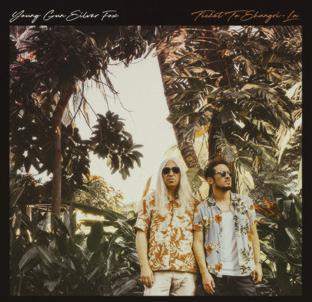
This is the project of veteran musician Shawn Lee and vocalist Andy Platts (who’s also part of Mama’s Gun, for all you fans here in Korea), and the duo since debut have often been very unfairly pigeonholed into the so-called “yacht rock” genre (and seriously, blech to that entire tag, even as a mere concept). Ticket to Shangri-La is the duo’s fourth album and is an expansive adventure of a record that explodes with brass soul odes, incredibly detailed arrangements, and an infectious sunshine that permeates every song.
While many might put this band in front of Kool & The Gang at the country club placemat, such blasé
categorization does a huge disservice to a duo that showcases a mastery of songwriting and multilayered musicality that smacks of Steely Dan at the very pinnacle of their genius more than anything.
HONORABLE MENTIONS…
…along with big albums that have been written about ad nauseum, so whatever:
Beyonce – Renaissance Mitski – Laurel Hell About – Omnibus The Smile – A Light for Attracting Attention
Adrian Quesada – Jaguar Sound Sault – Today & Tomorrow Honey Dijon – Black Girl Magic Perfume Genius – Ugly Season Makaya McCraven – In These Times Nilufer Yanya – Painless Julien Chang – The Sale Peach Luffe – Everything Is Peachy Monophonics – Sage Motel Σtella – Up and Away Swatkins – Friends & Other Necessities Karolina – All Rivers Weyes Blood – And in the Darkness, Hearts Aglow River Westin – The Honeymoon Suite Nick Hakim – Cometa Tove Lo – Dirt Femme Bulgarian Cartrader – Camden Free Public Library Yeah Yeah Yeahs – Cool It Down Nurdjana – Coming Home Regina Spektor – Home, Before and After Horsegirl – Versions of Modern Performance Fontaines DC – Skinty Fia
The Author
Daniel J. Springer (aka “Danno”) is the creator, host, writer, editor, and producer of “The Drop with Danno,” broadcasting nightly on GFN 98.7 FM in Gwangju and 93.7 FM in Yeosu from 8 to10 p.m. Prior to this, he was a contributor to several shows on TBS eFM in Seoul, along with being the creator and co-host of “Spacious” and “White Label Radio” on WNUR in Chicago. You can find “The Damyang Drop,” his monthly collaborative playlist with The Damyang House, on YouTube and Spotify. Instagram, Twitter, Facebook: @ gfnthedrop

gwangjunewsgic.com Gwangju News, January 2023 53


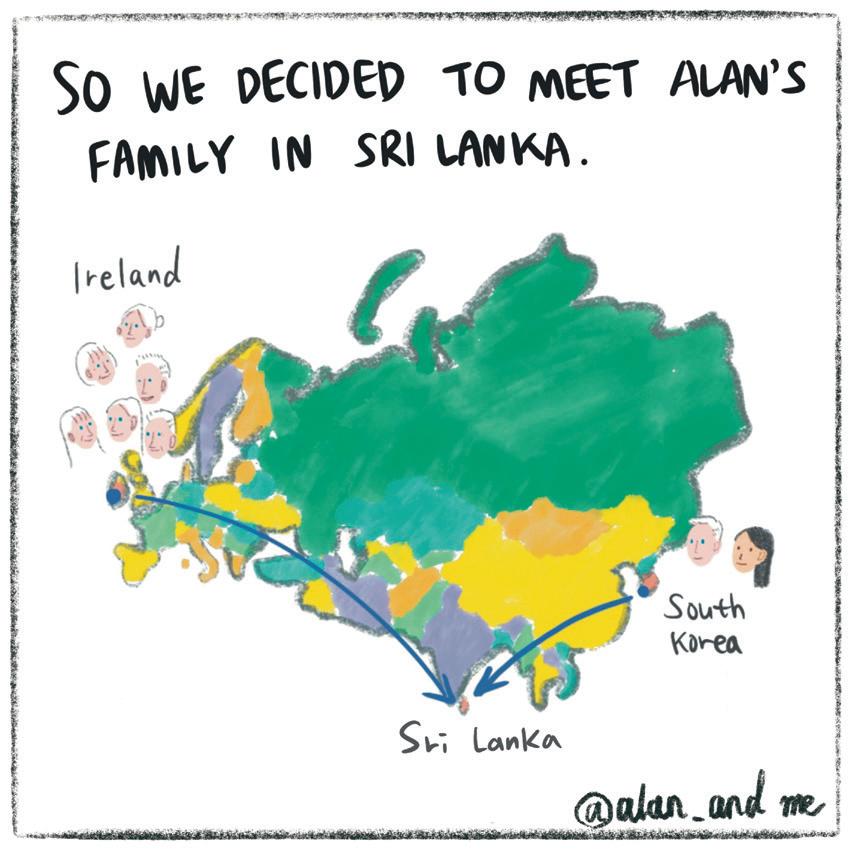



Gwangju News, January 2023 gwangjunewsgic.com 54 CULTURE & ARTS Comic Corner
The Author
Yun Hyoju was born and raised in Gwangju, and somehow ended up married to an Irish guy named Alan. She has been working on her short comic, “Alan and Me,” which is about their daily life. She publishes a new comic every week on Instagram. It can be found here: @alan_andme.
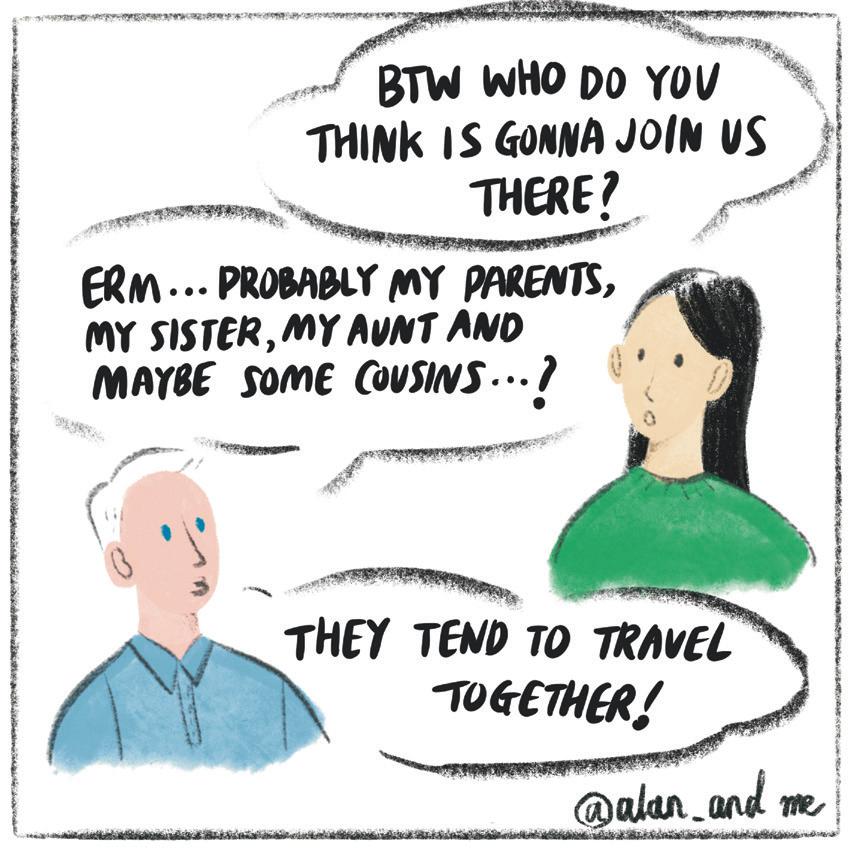
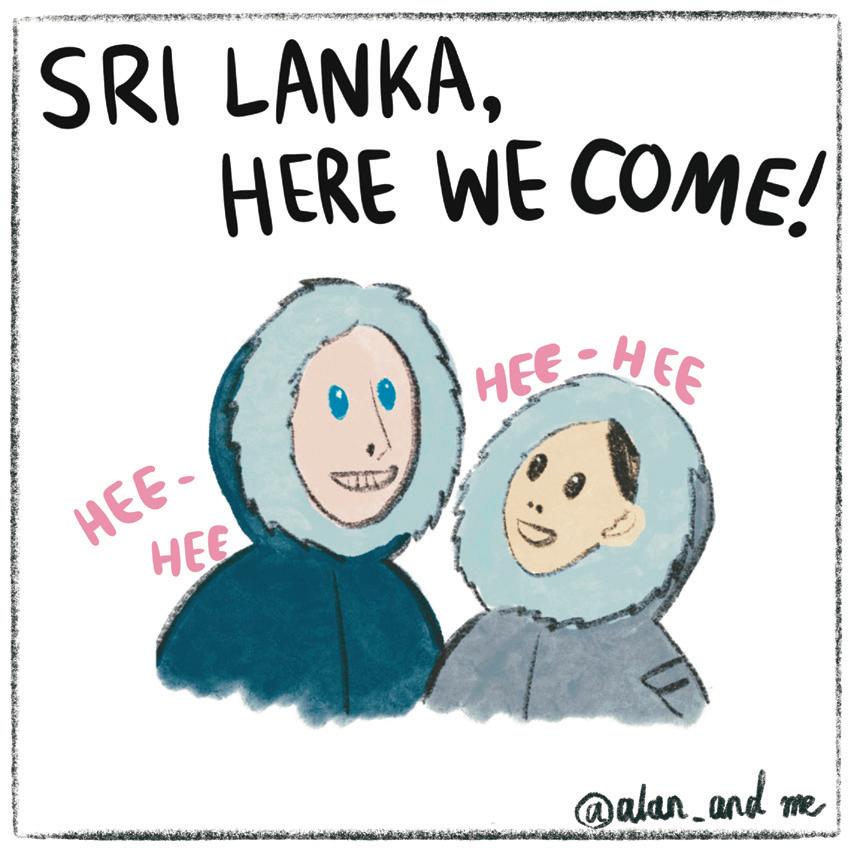

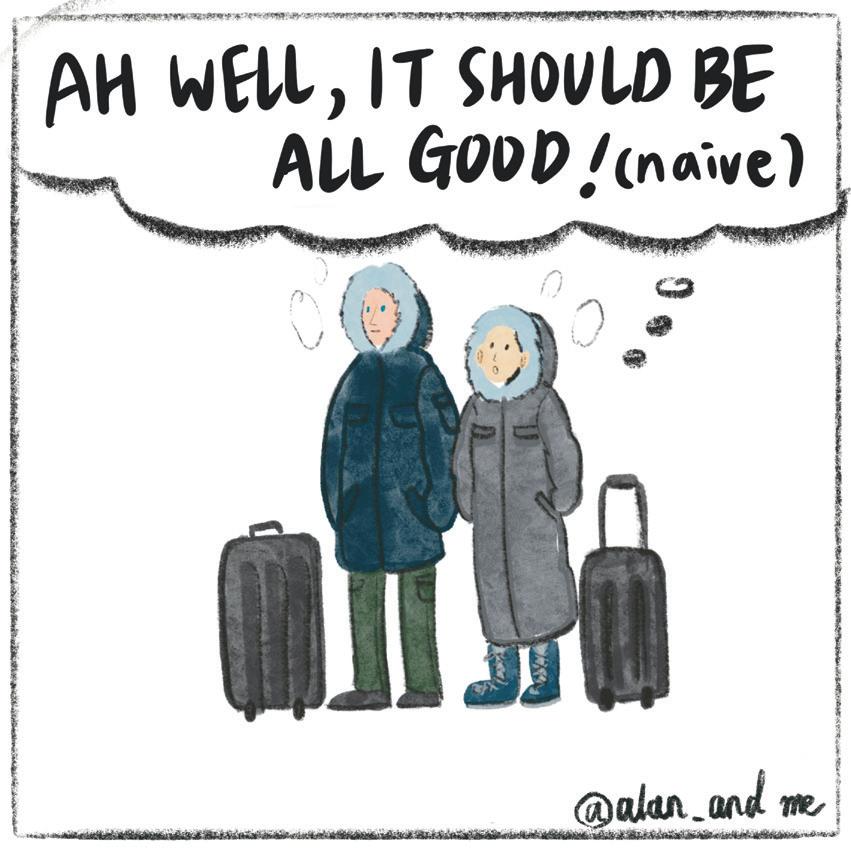



gwangjunewsgic.com Gwangju News, January 2023 55
French version of pancake
Gwangju News writer Ellie

Ingredient in hanyak
K-pop group from Produce 101
Barley bristle
Infamous Roman emperor
Gwangju News, January 2023 gwangjunewsgic.com
1 Dongbok _, Gwangju’s water source 4 US version of KDCA 7 Openings 11 One of Korea’s top hospitals 13 On ___ Majesty’s Secret Service 14 Aroma 15 Tick-borne disease 16 Dwight
17 Exclamation of alarm (2 words) 18 Common
countryside
21 Traditional
24 Exclamation of disgust 25 Exclamation
a
26 Boobytrap 28 Last inning in baseball
56 1 2 3 4 5 6 7 8 9 10 11 12 13 14 15 16 17 18 19 20 21 22 23 24 25 26 27 28 29 30 31 32 33 34 35 36 37 38 39 40 41 42 43 44 45 46 47 48 49 50 51 52 53 54 55 56 57 58 59 60 32 Goes with life or requisition 34 Catch 36 Western alliance 37 Capital
39 Sheep’s
41 Will
42 ___ Moines,
44 Guksu or ramyeon 46 Give away instead of throw away 49 Kkanpung seafood dish 50 Cheerleaders’ exclamation 51 Chairman
55
56 Reddit
57
58
59 Web portal 60 Online type of RPG
Created by Jon Dunbar
Eisenhower
sight in Korea’s
(2 words)
Korean costume
by
bullfighter
Look for the answers to this crossword puzzle to appear in February in Gwangju News Online (www.gwangjunewsgic.com).
city
sound
Shortz’s company
Iowa
Tae-won
“The doctor ___” (2 words)
interview event
Holiday on the fifth day of the fifth month of the lunar calendar
Neighborhood, in Korea
W
ACROSS DOWN 1
2
3
4
5
6
7
8
9
10
12
19
20
21
22
23
27
29
30
31
33
35
38
surnames 40
43
45
46
47
48
49
52
53
54
C R O S S
O R D P U Z Z L E
Old broadband service
“A rose by ___ other name”
Silent
Korea’s popular food at sporting events
Feint, in hockey
Common neurodevelopmental disorder
Early Hyundai vehicle
“No seats left”
Korean pubs
___ vera
Dollop
Flash memory type
WWW signoff
Table d’___
Gwangju’s stadium
Korean side dishes
One of Korea’s most popular
Old WWW provider
Shoo!
Economic bloc Korea joined in 1996
Burkina ___
Bridle strap
Popular winter street food
Sex Pistols’ Vicious
Common gimbap ingredient
CJ ___
Ah-in or Jae-seok
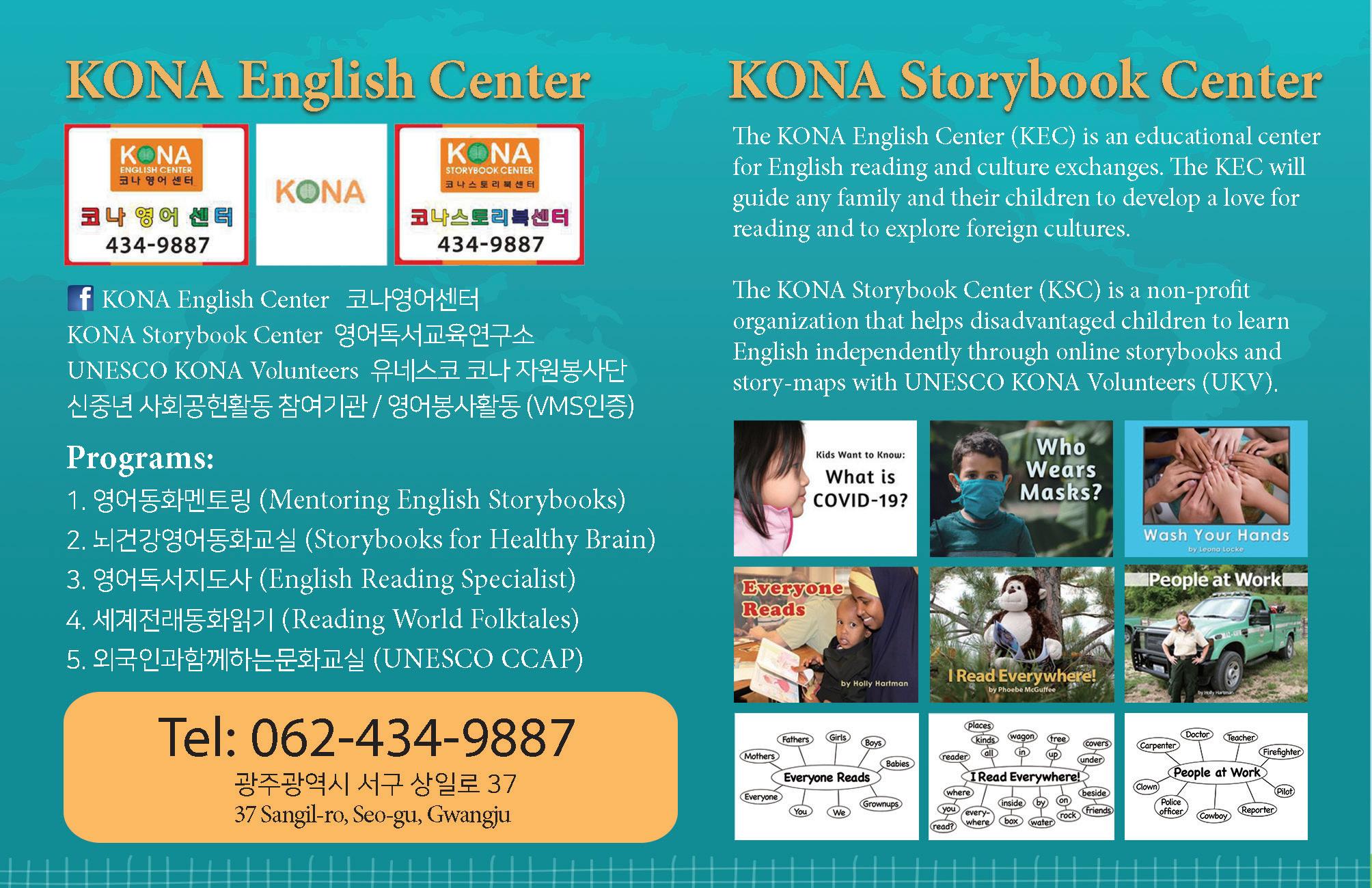
Mon. – Sat. 10 a.m. – 6 p.m. Lunch hours 1 p.m. – 2 p.m. H through Kakao Talk Plus Friend “AskGwangju.” Add us now! :)
GIC
GWANGJU INTERNATIONAL CENTER
For only 50,000 won/year, you help the GIC provides a space for exchanges for the local and international communities to learn and experience various cultures from around the world and to promote respect for diversity and inclusivity.





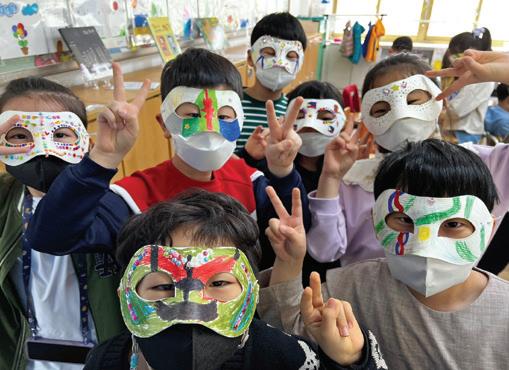
Bene�its
as a GIC member:
Receive the Gwangju News magazine every month. Priority for participation in programs. Get discounts on paid programs and space rentals. Borrow books and materials from the GIC Library. Get receipts for contributions provided for year-end tax settlement. (61475) 5 Jungang-ro 196-beon-gil (Geumnam-ro 3-ga), Dong-gu, Gwangju, Korea Tel. 062-226-2732 Email. gic@gic.or.kr Web. www.gic.or.kr
culture exchange communication sharing
community



















 Written by the Gwangju News
Written by the Gwangju News
































 By Harsh Kumar Mishra
By Harsh Kumar Mishra















 Photos courtesy of Julian Warmington.
Photos courtesy of Julian Warmington.



 By Park Nahm-shik
By Park Nahm-shik

 By Ellie Goodwin
By Ellie Goodwin
 By Amor Towles
Reviewed by Michael Attard
By Amor Towles
Reviewed by Michael Attard






























































